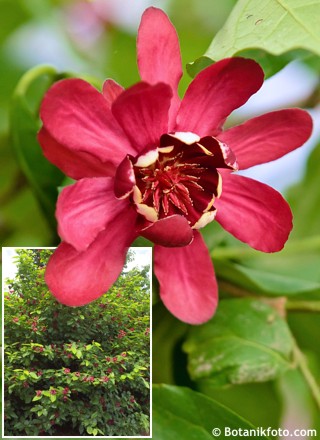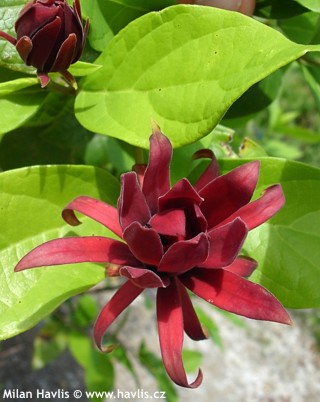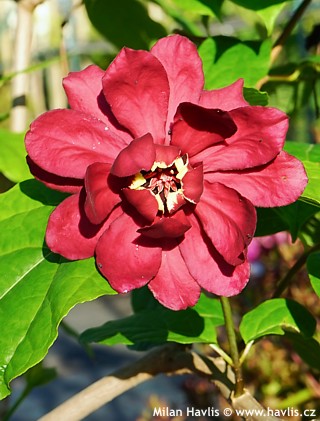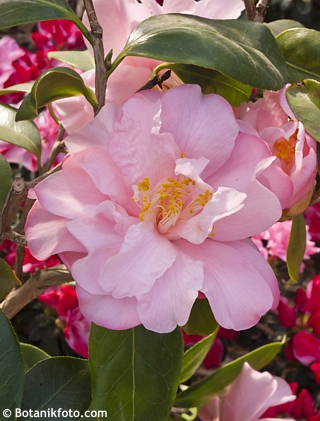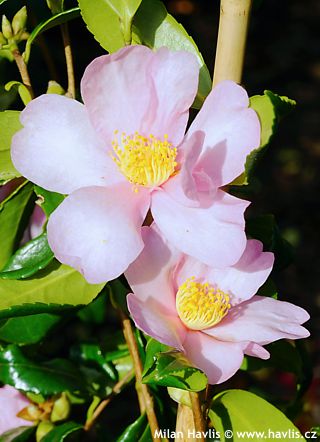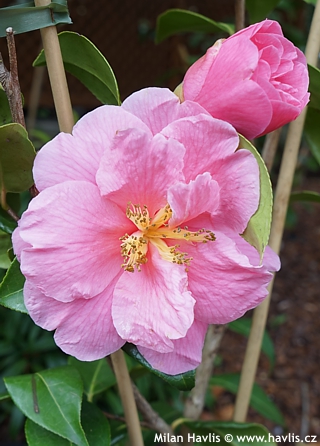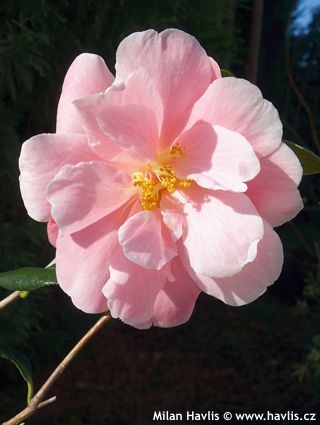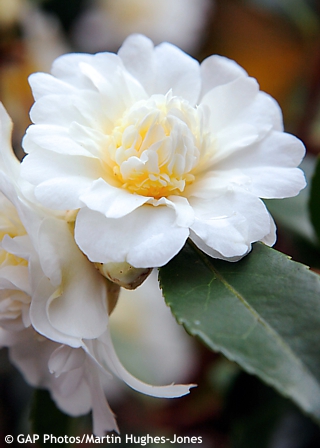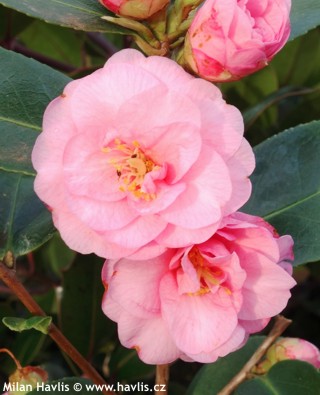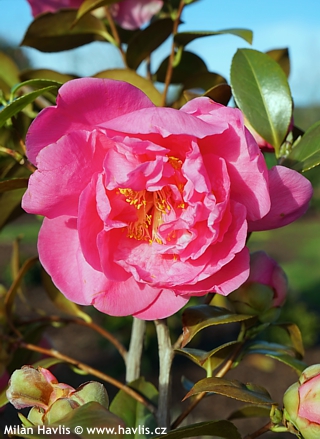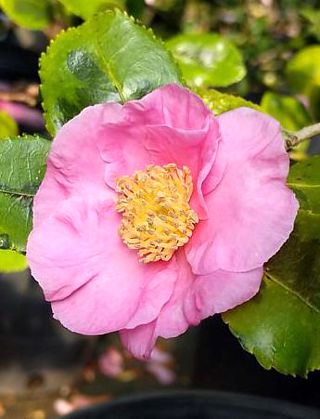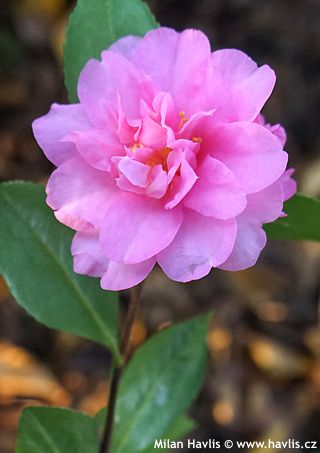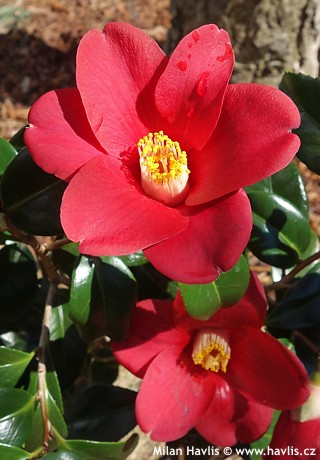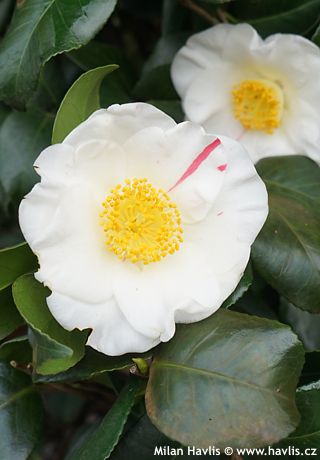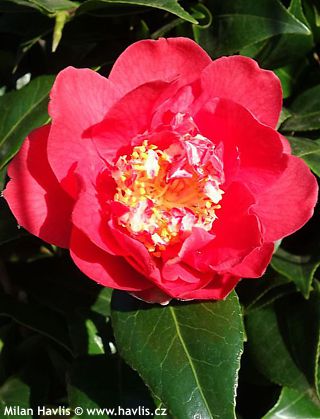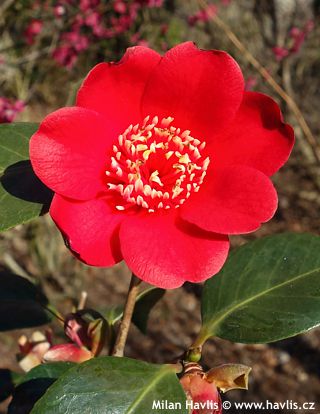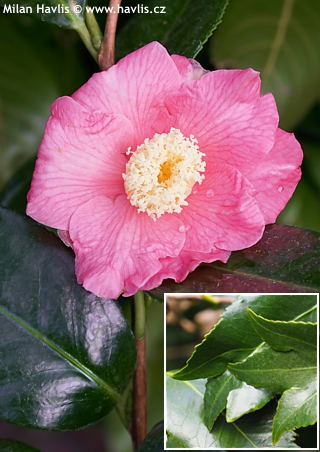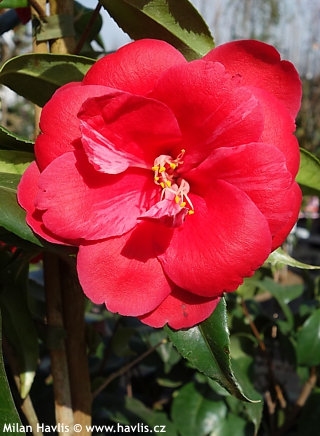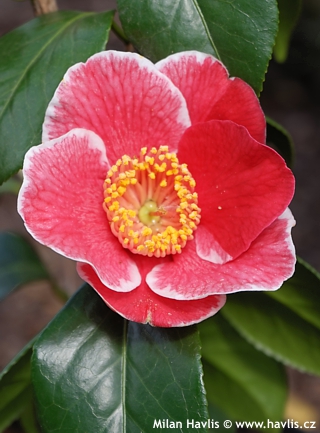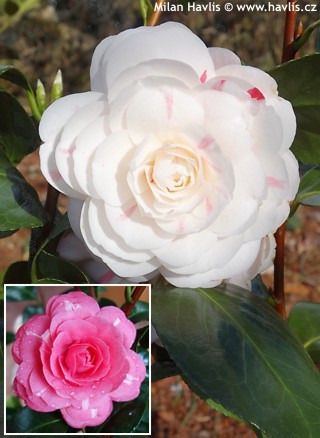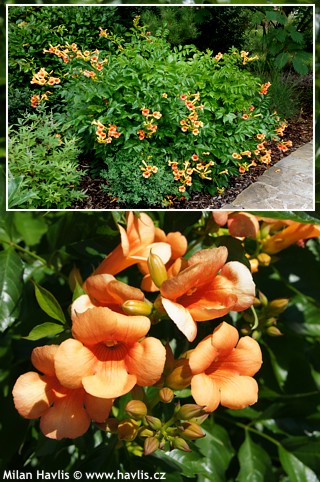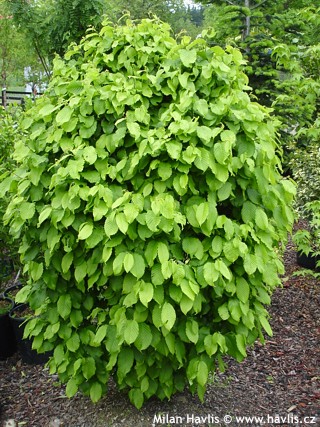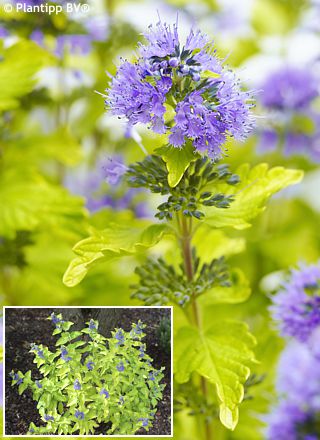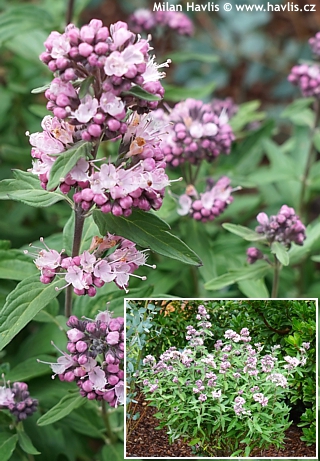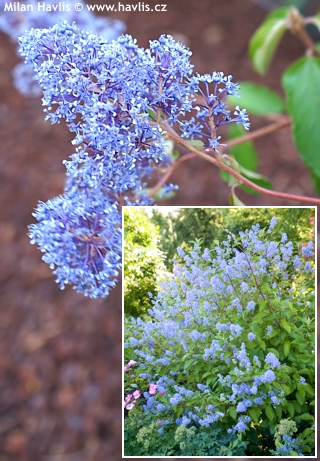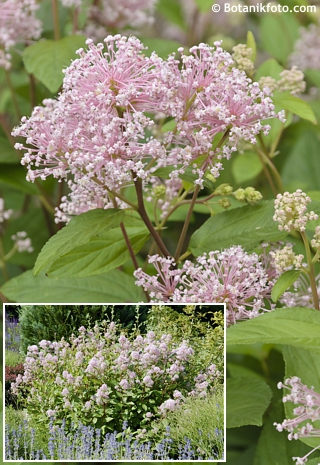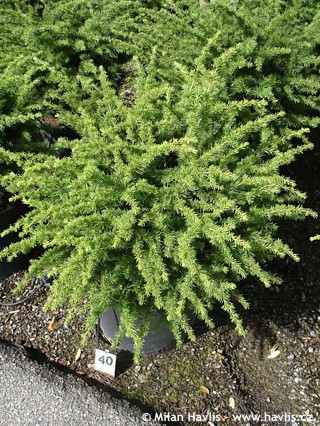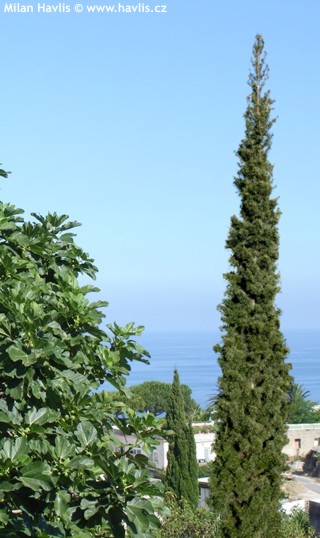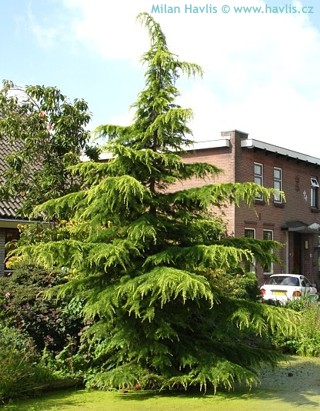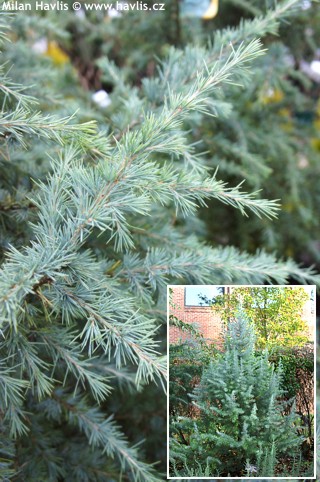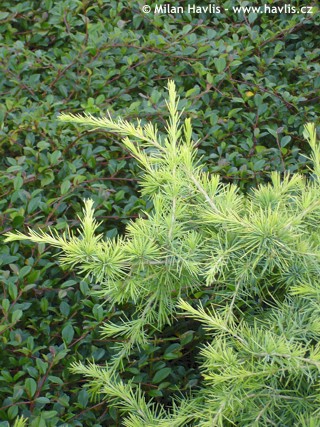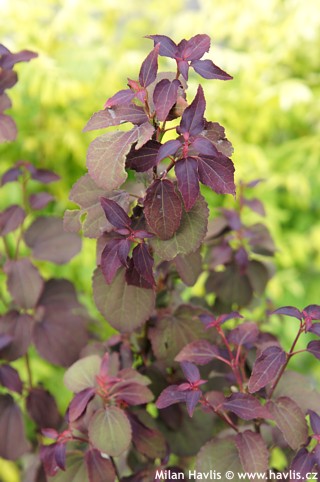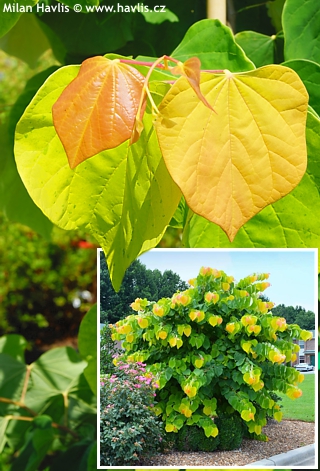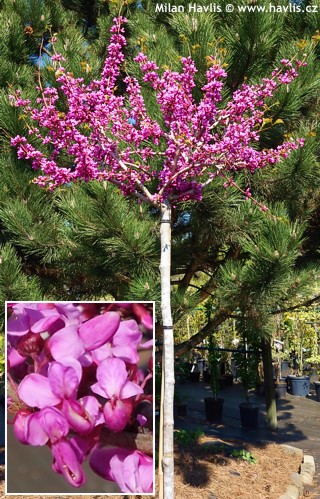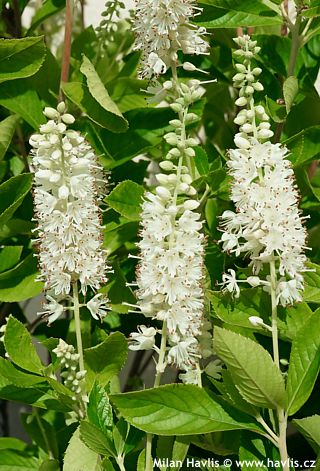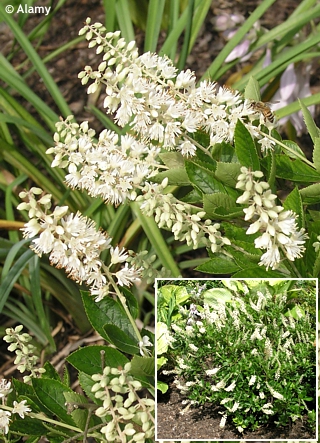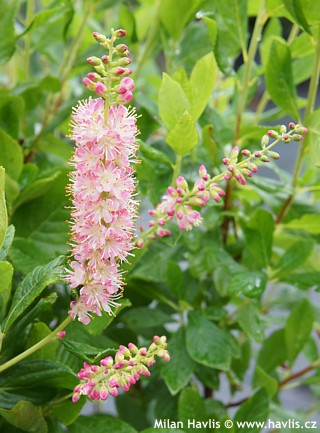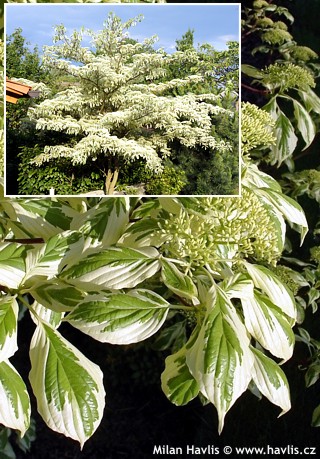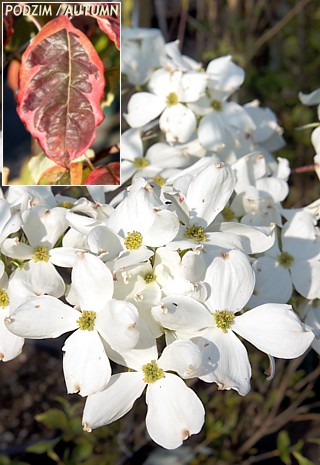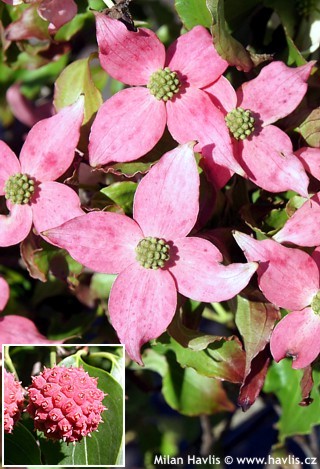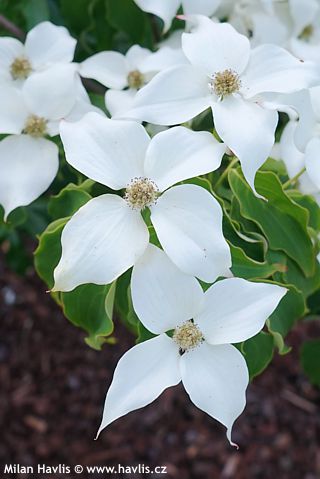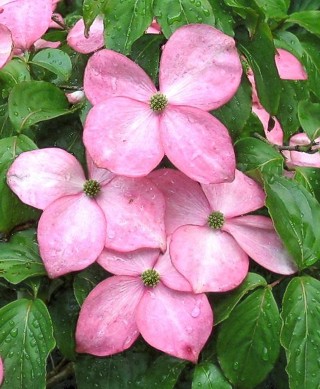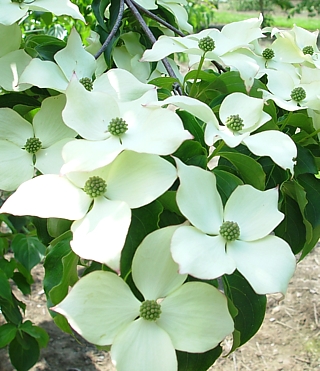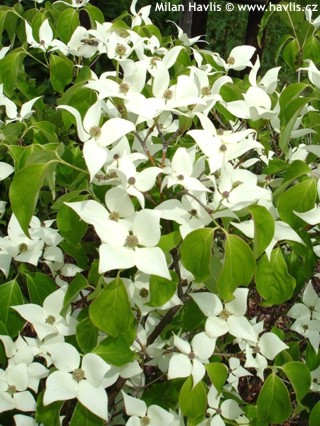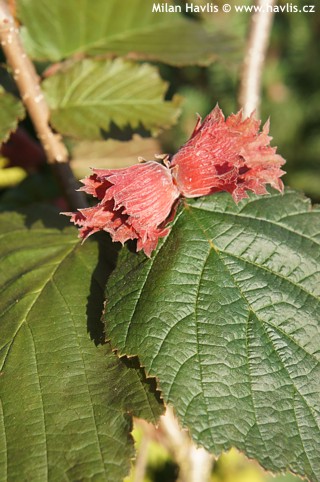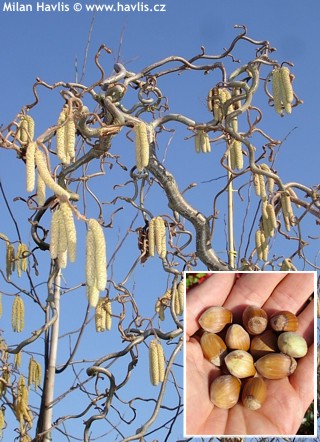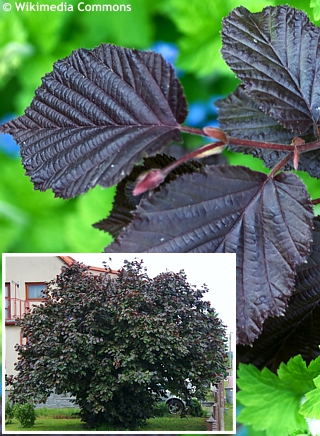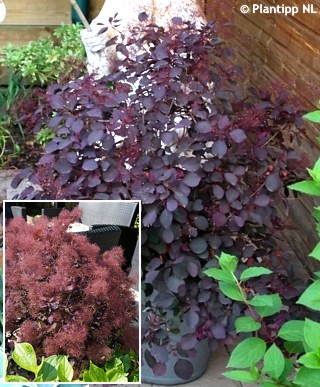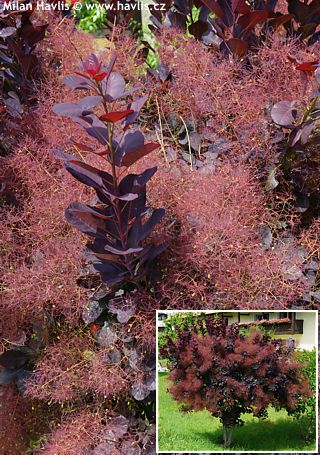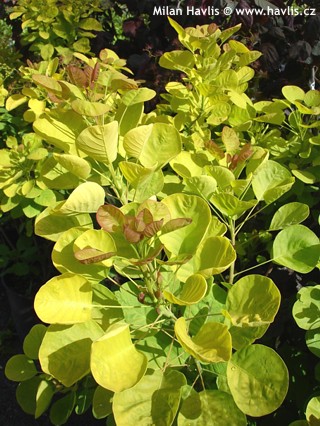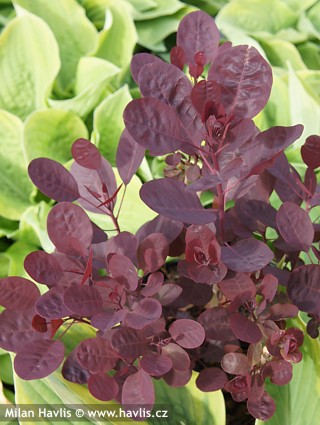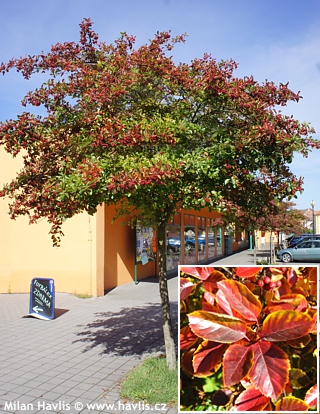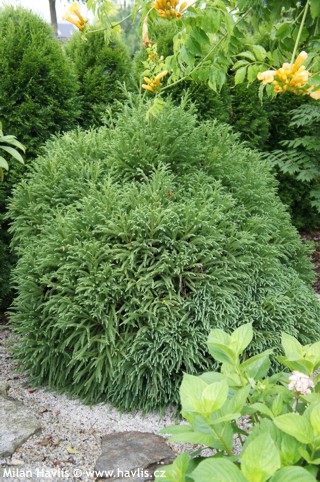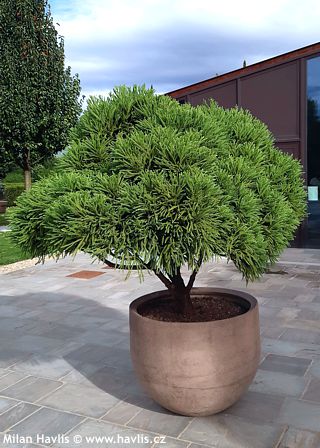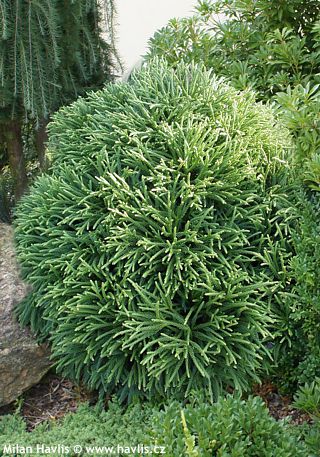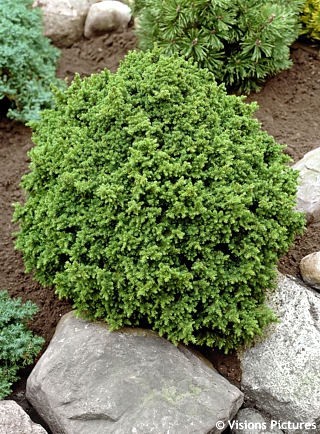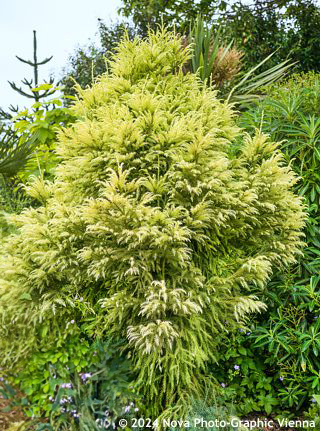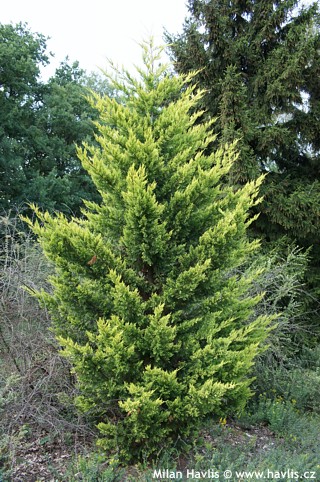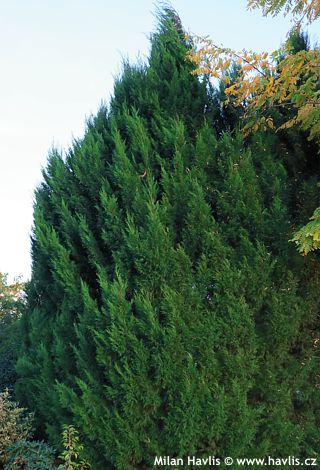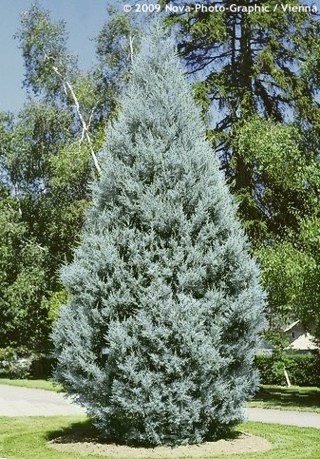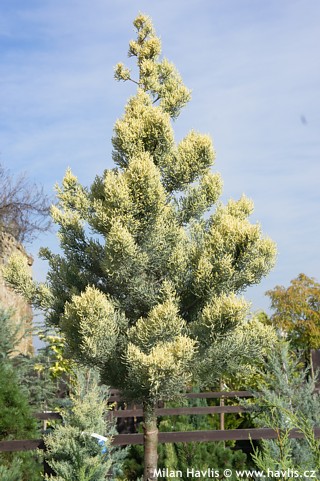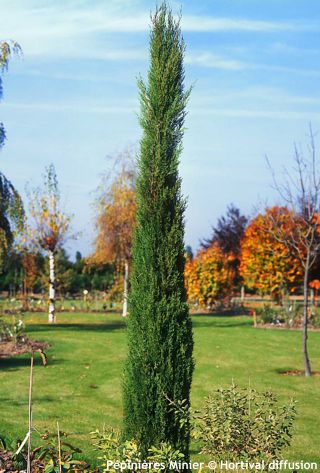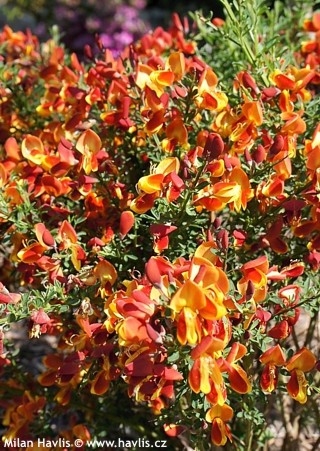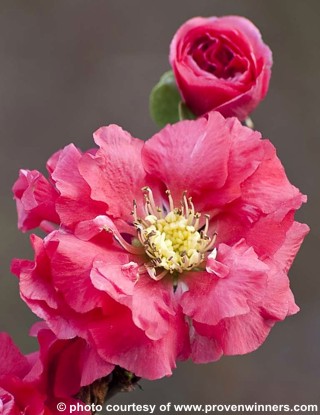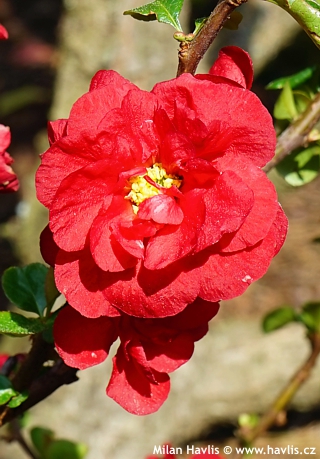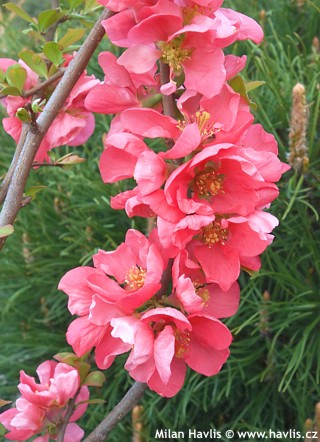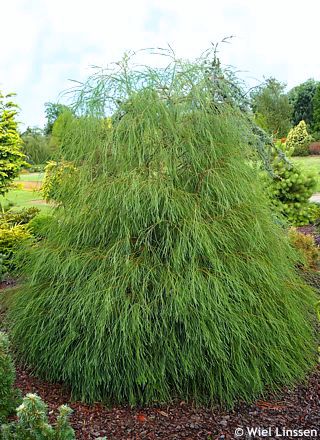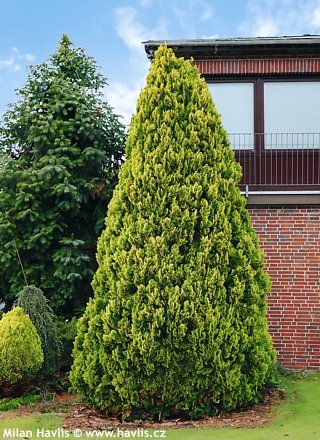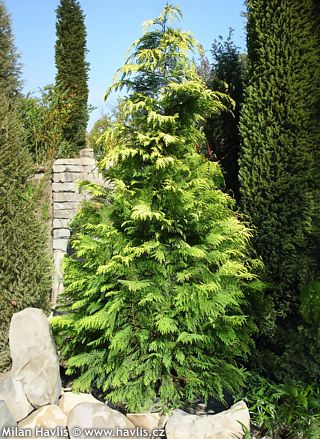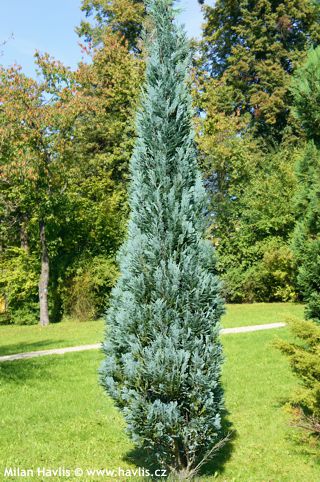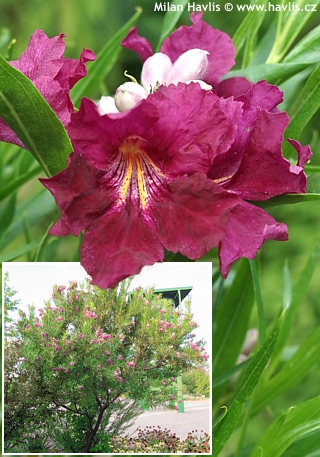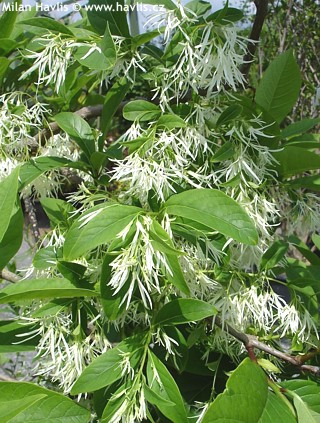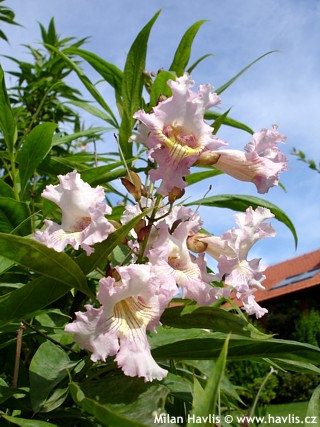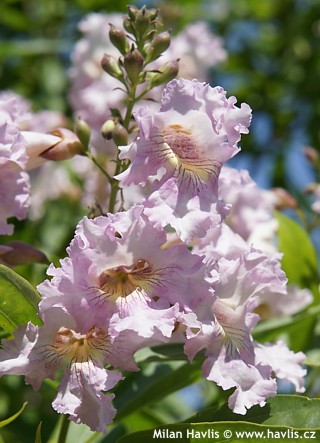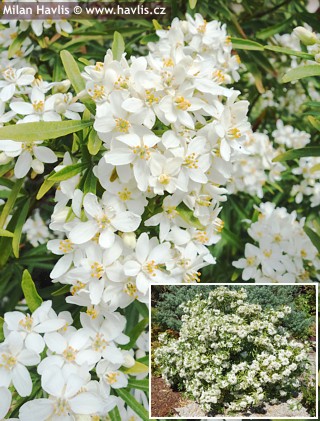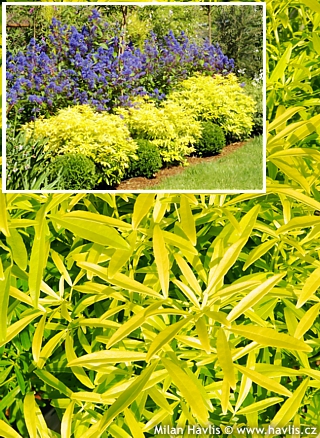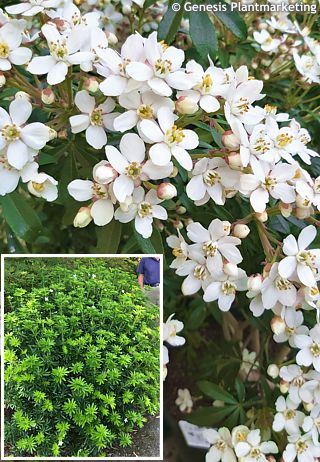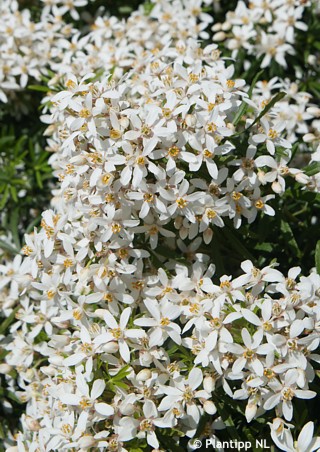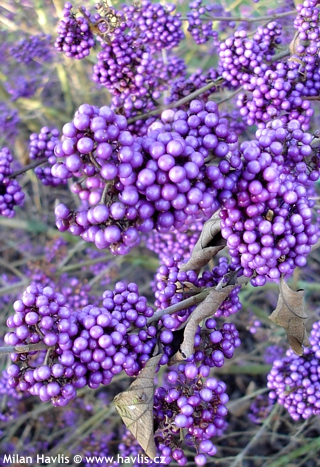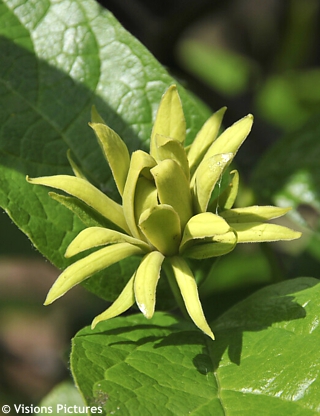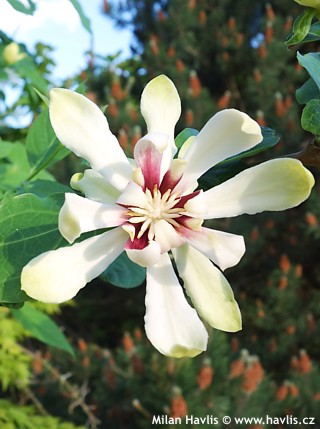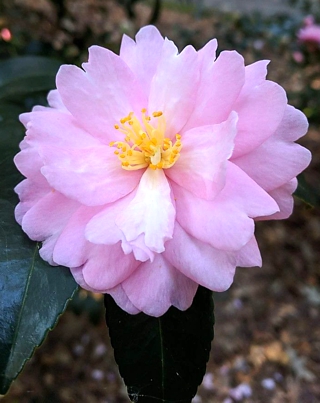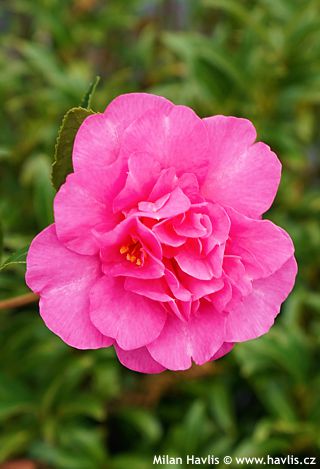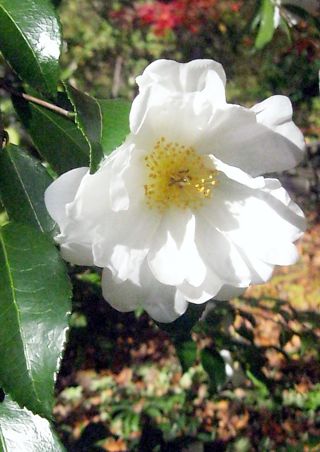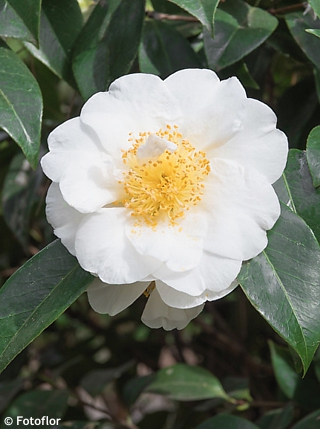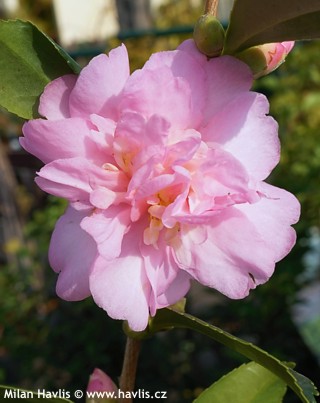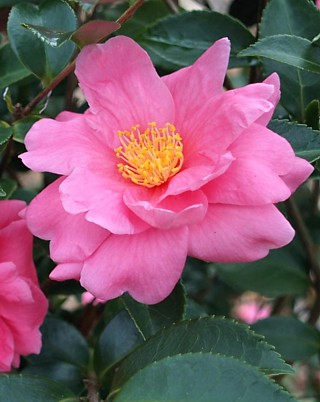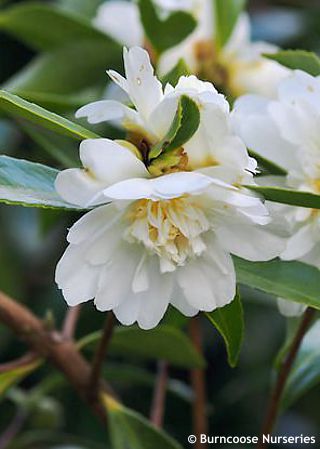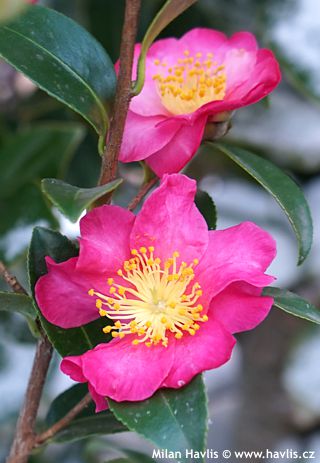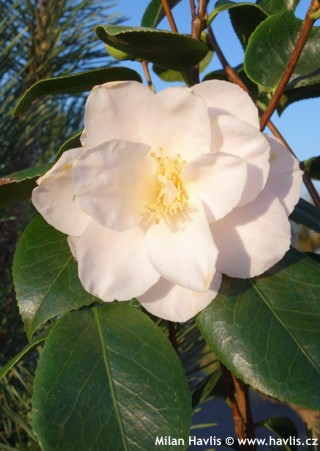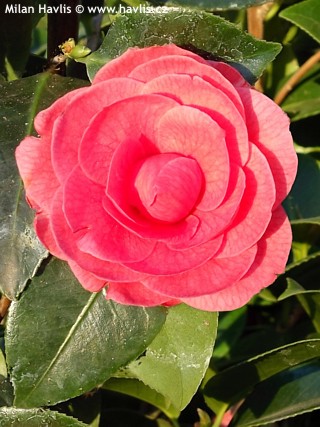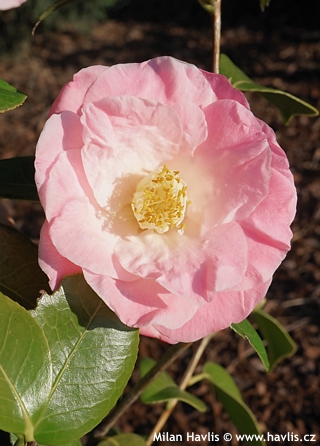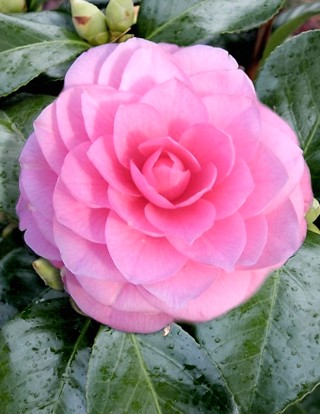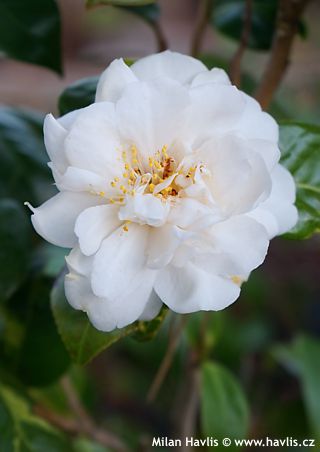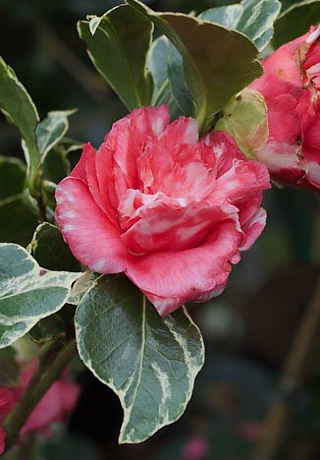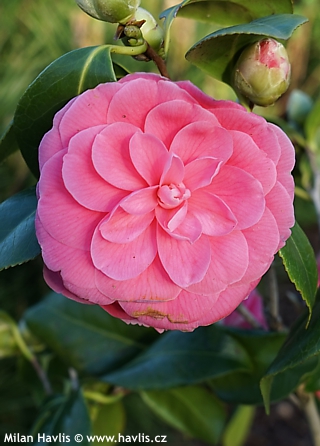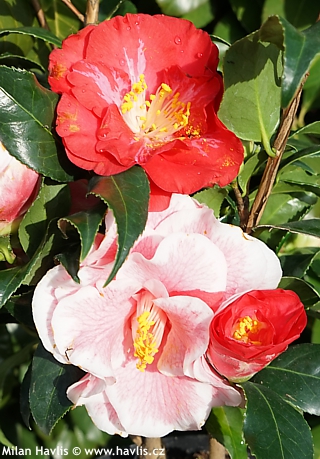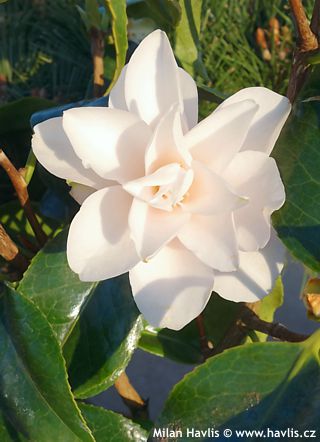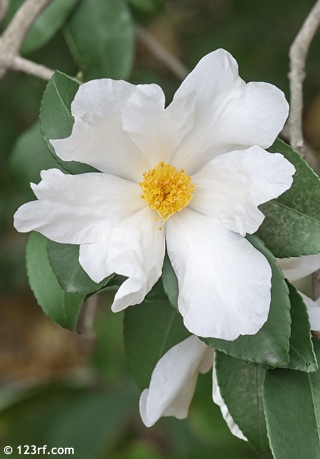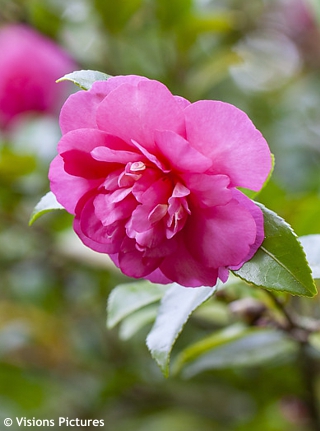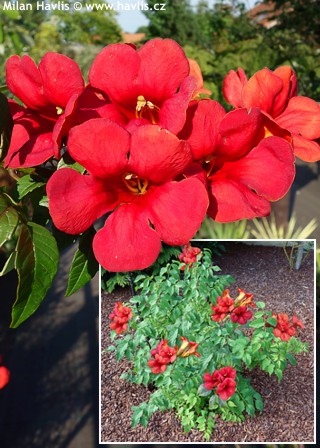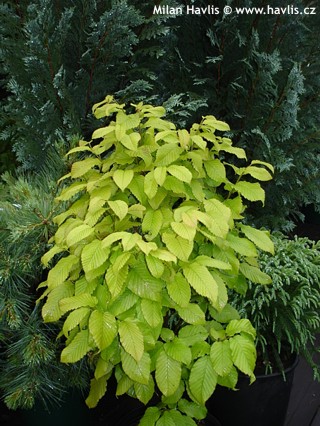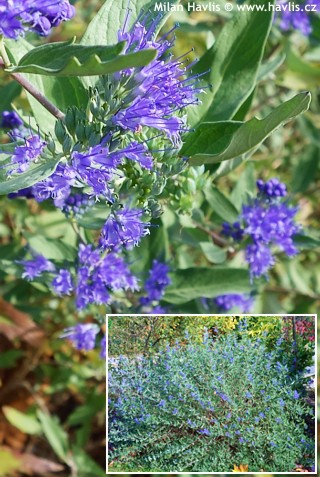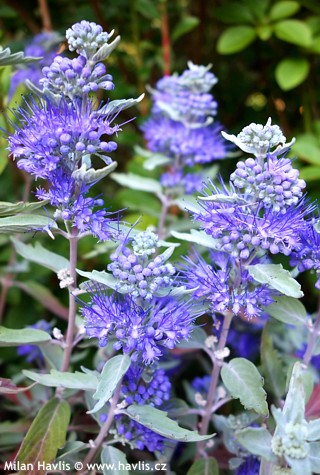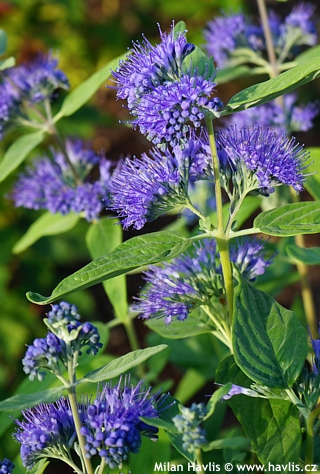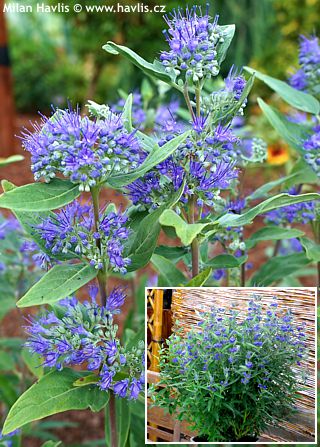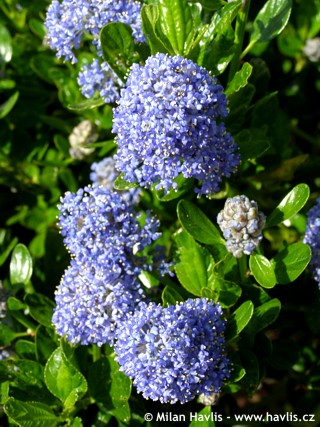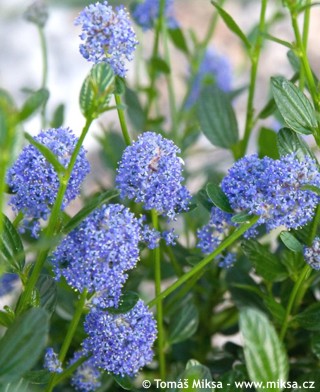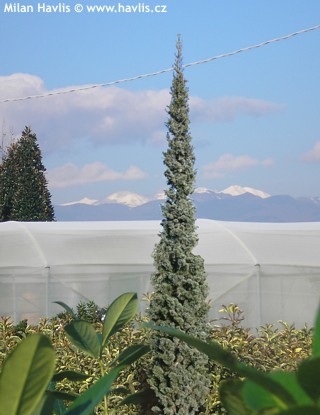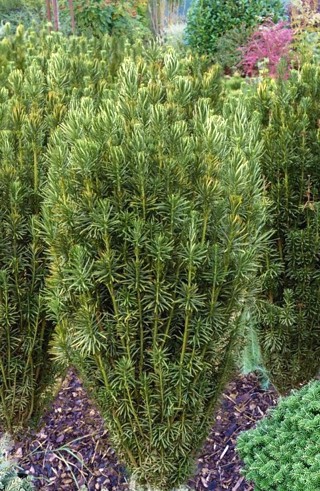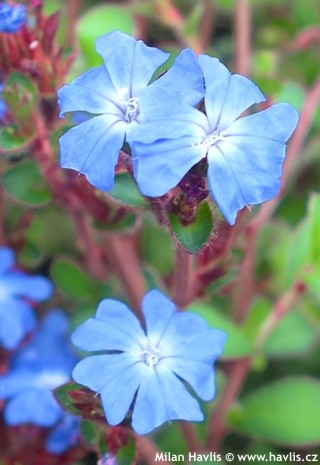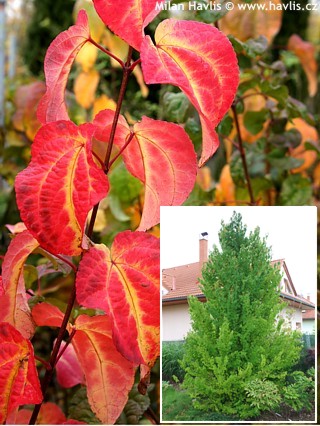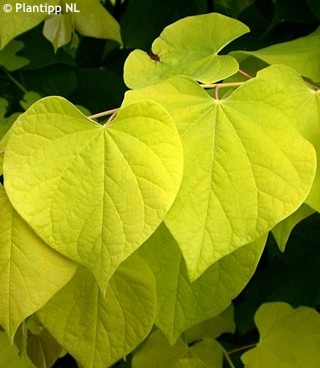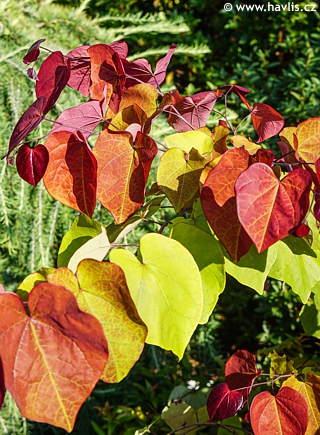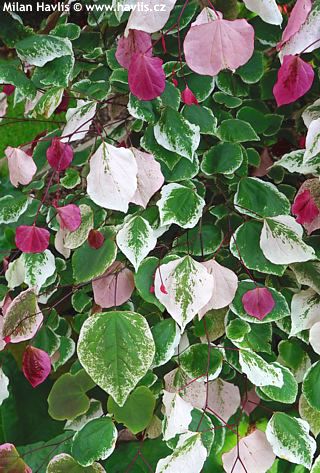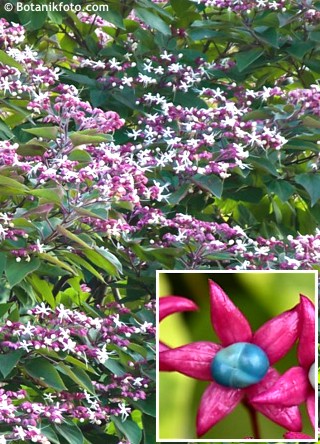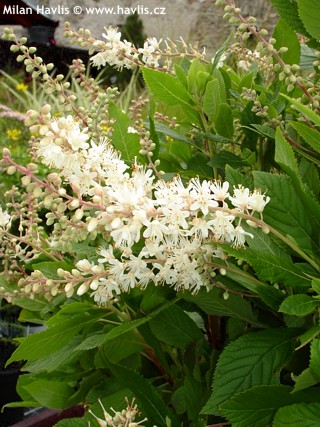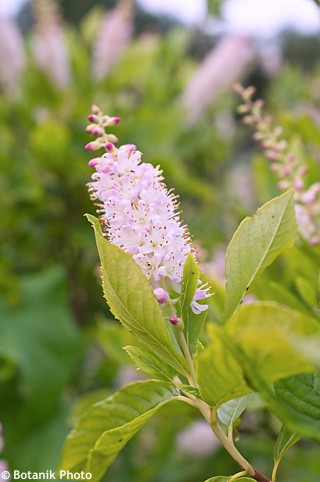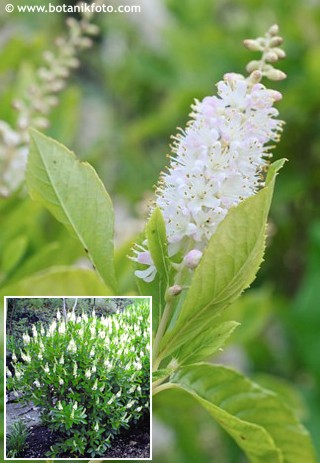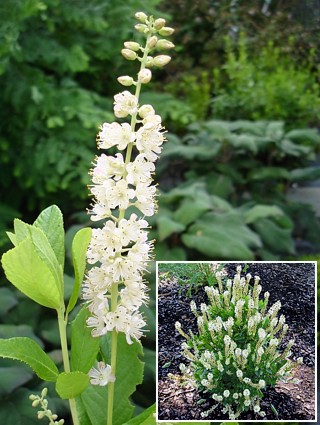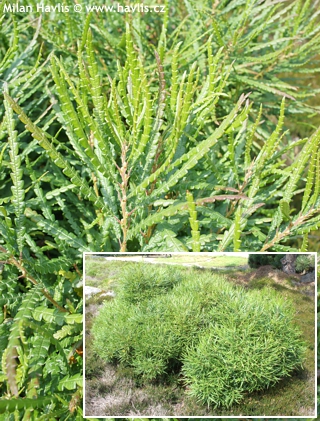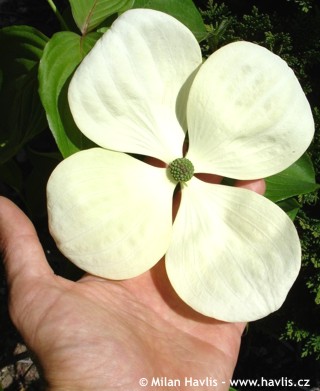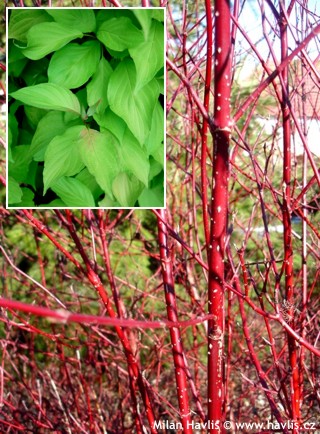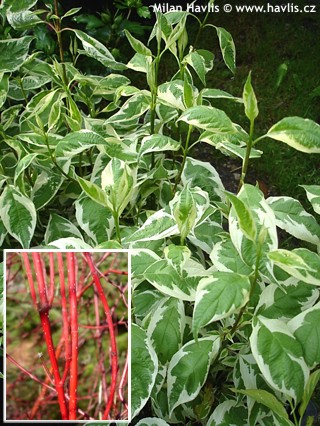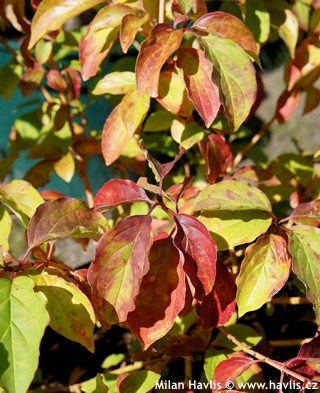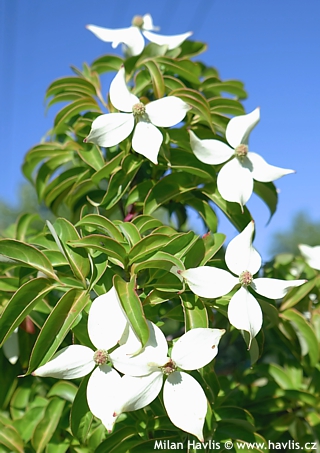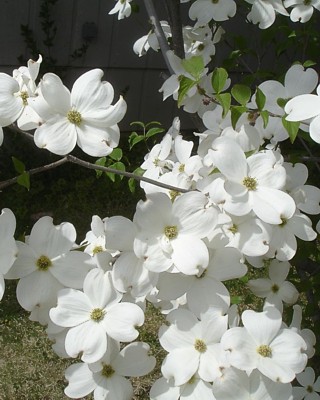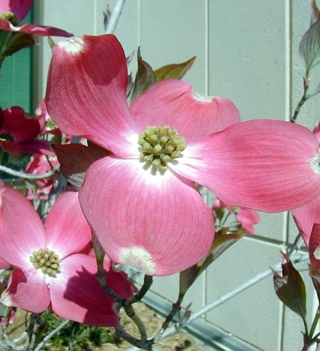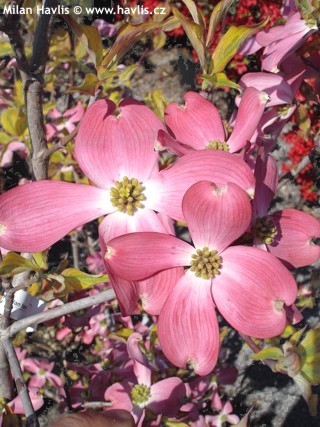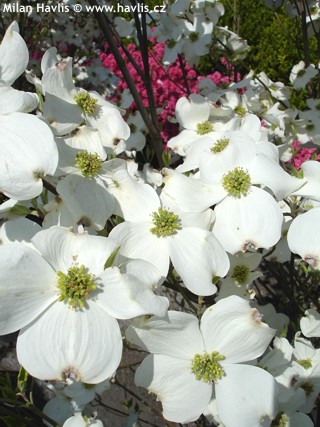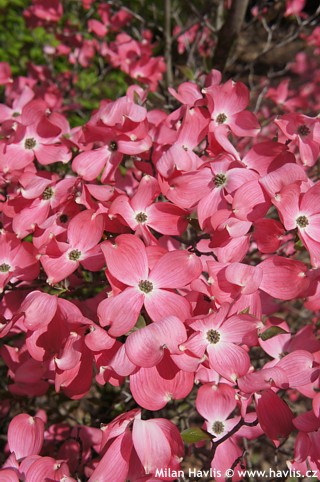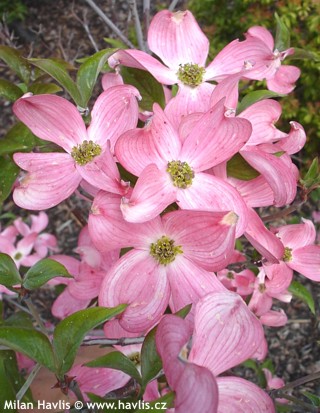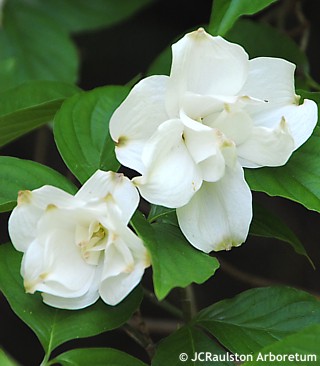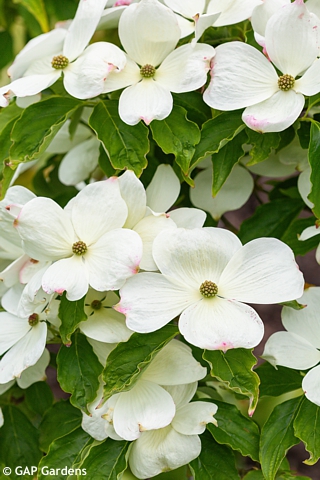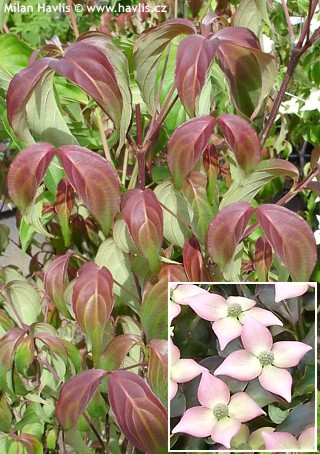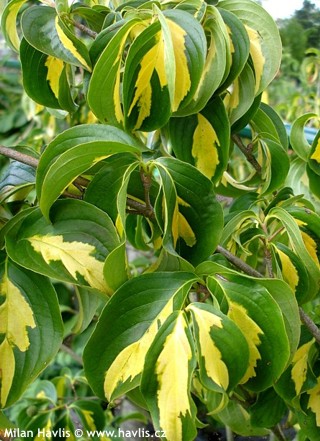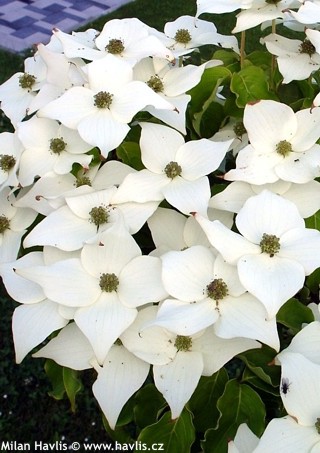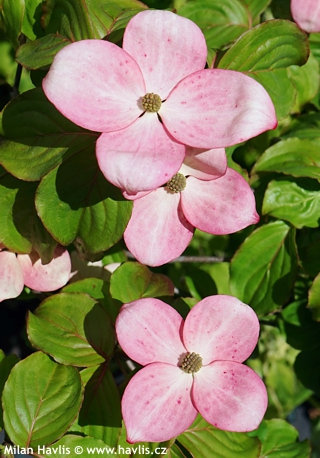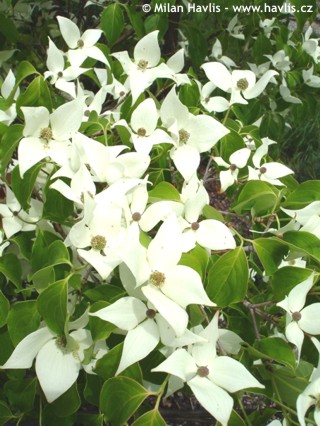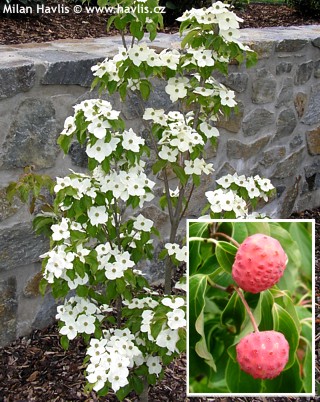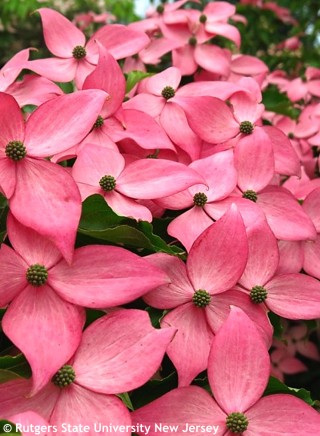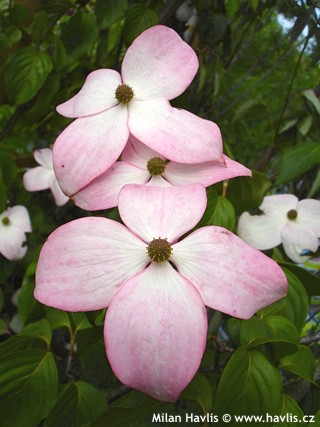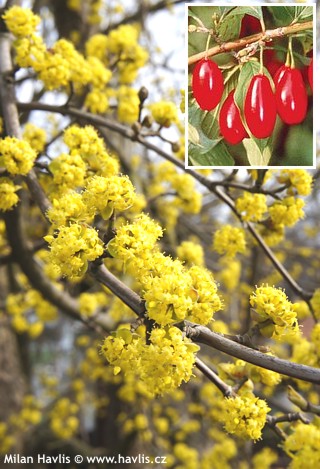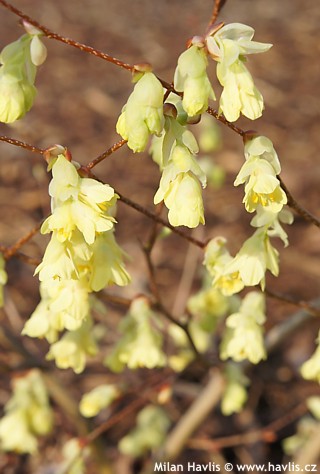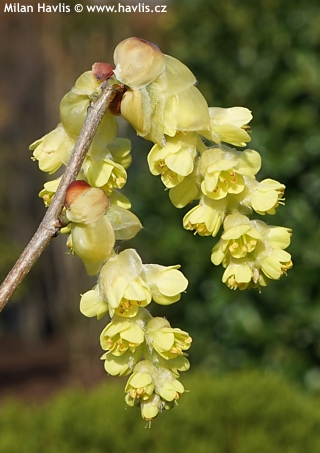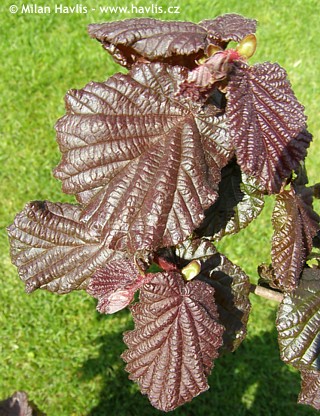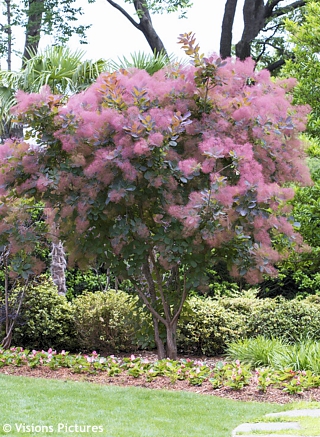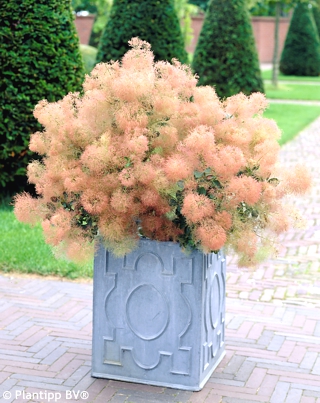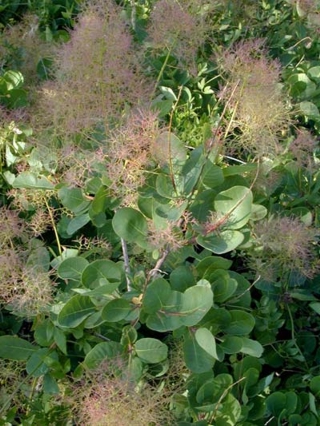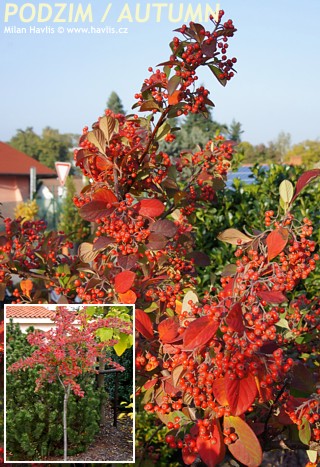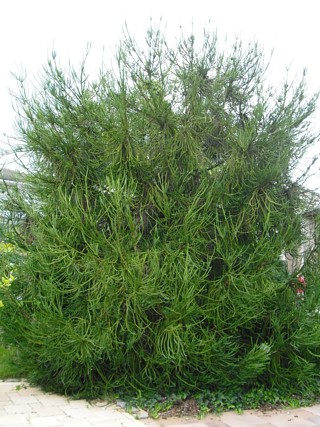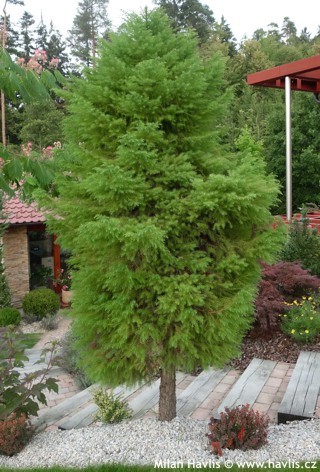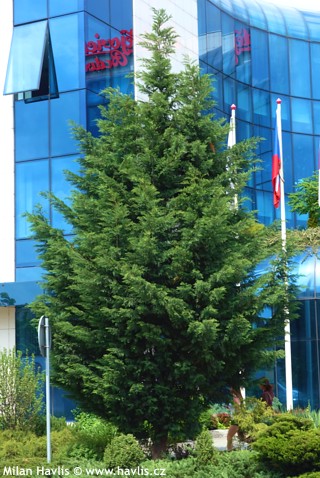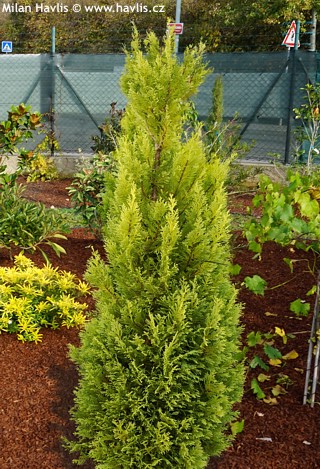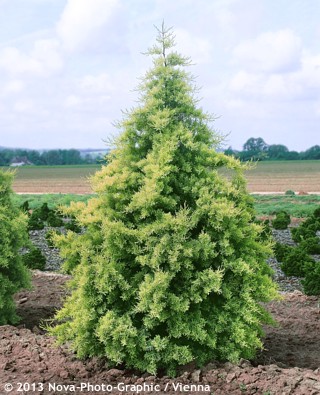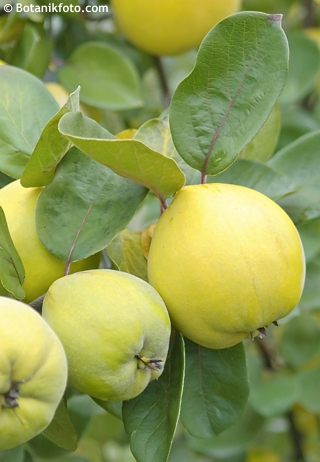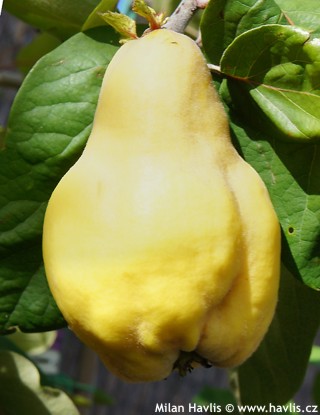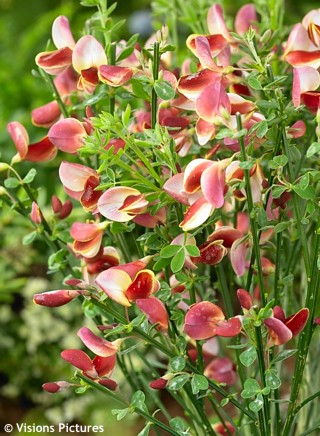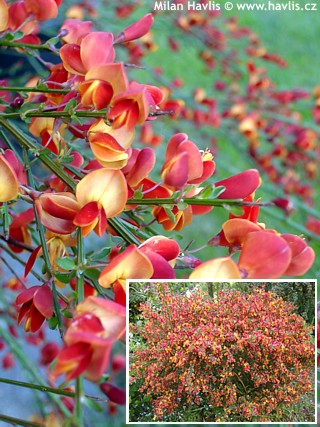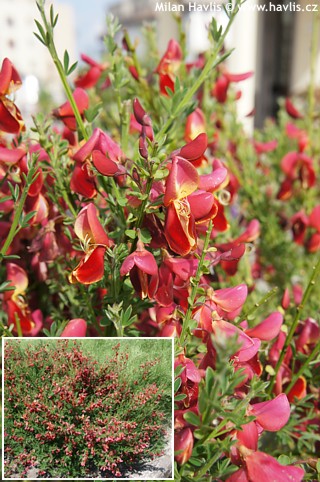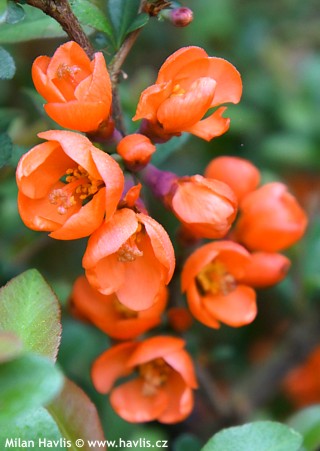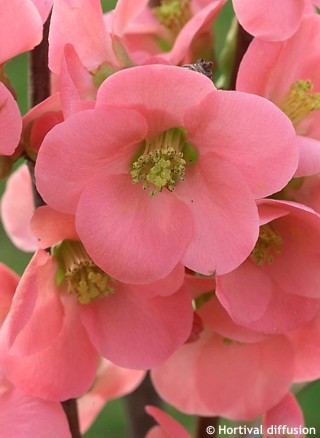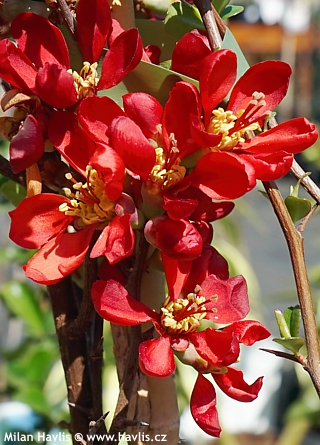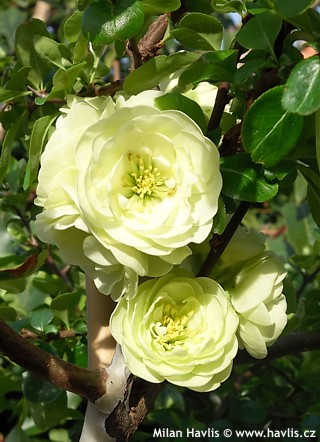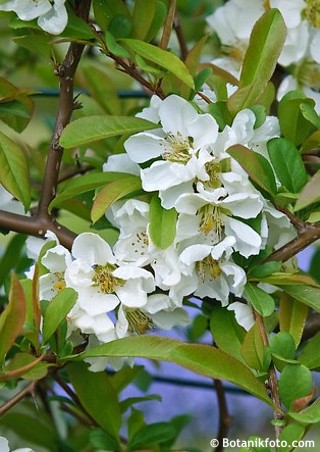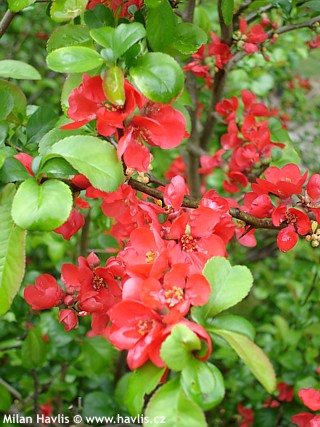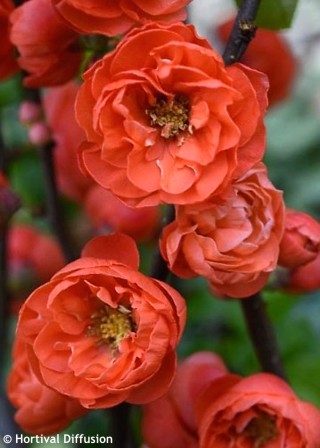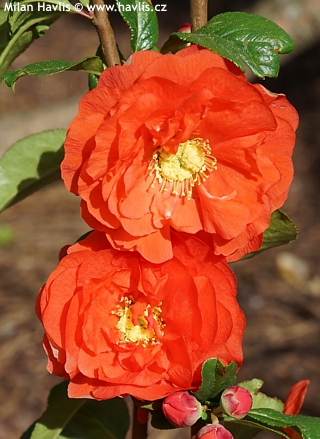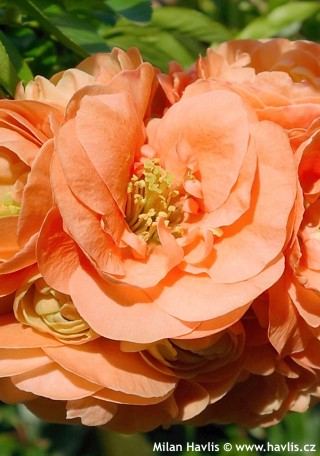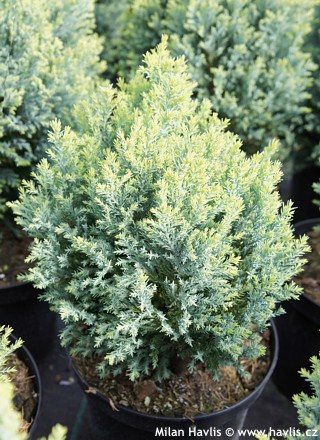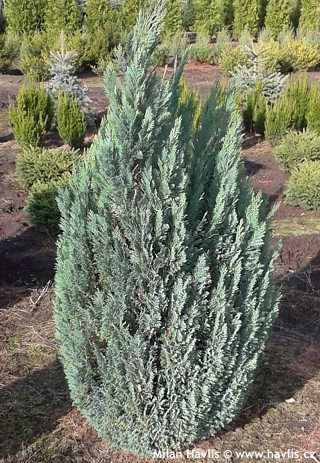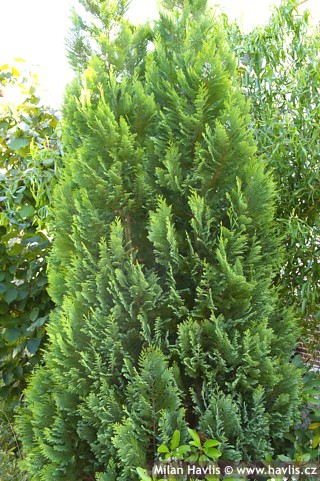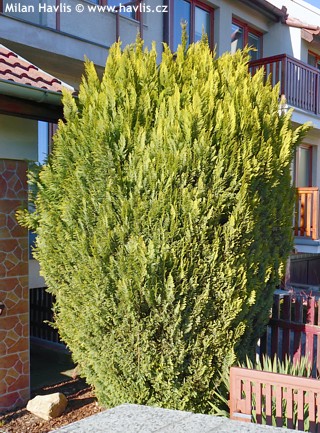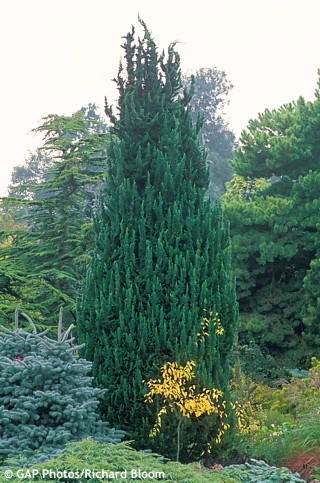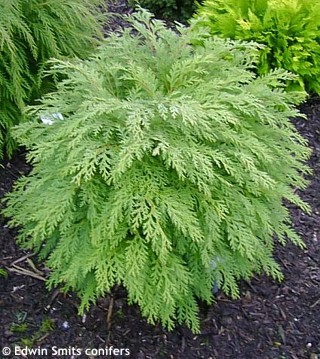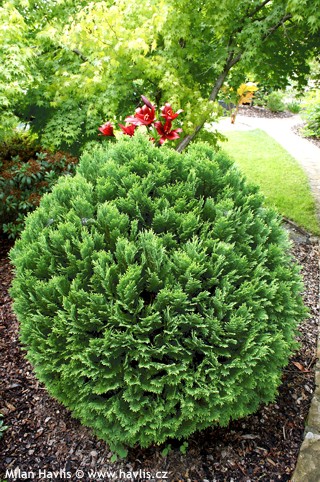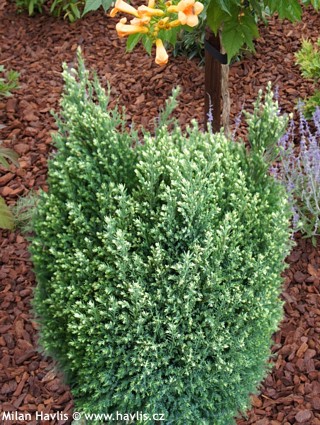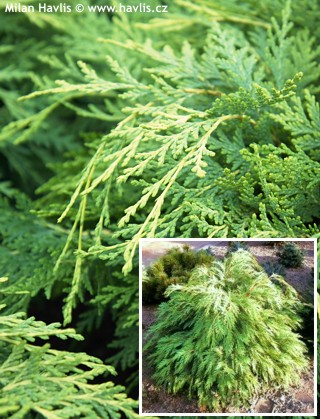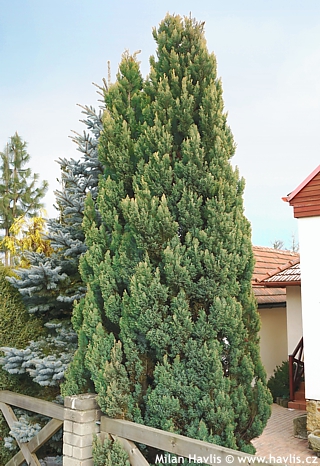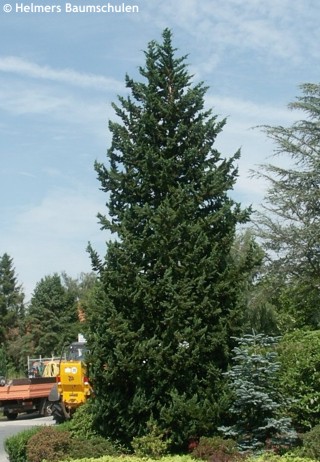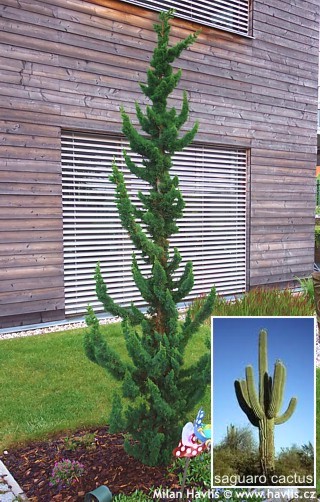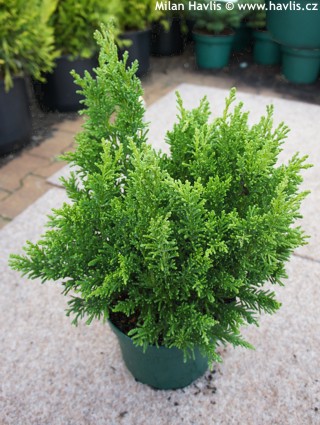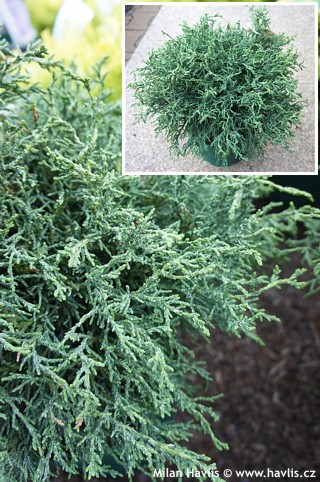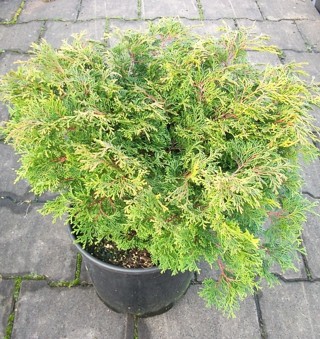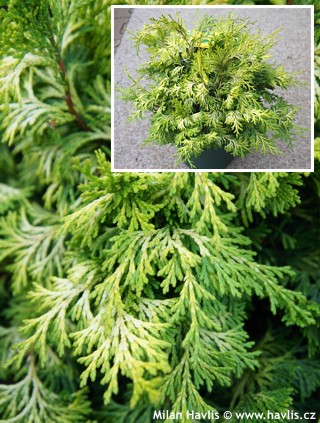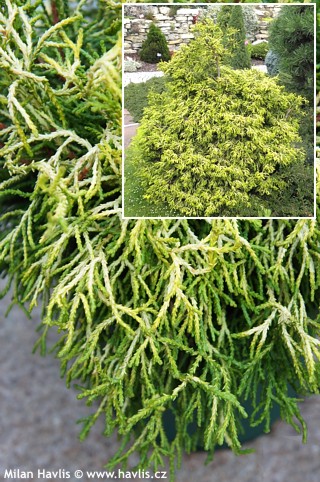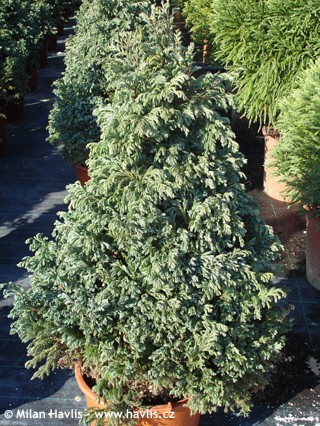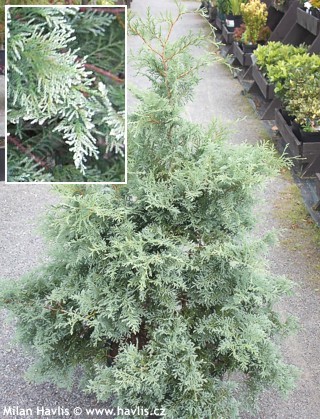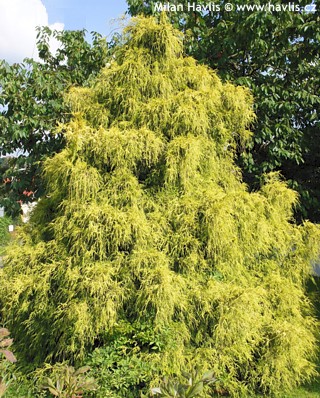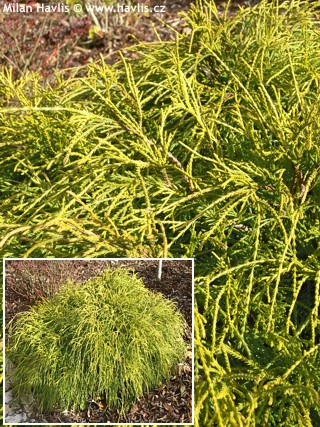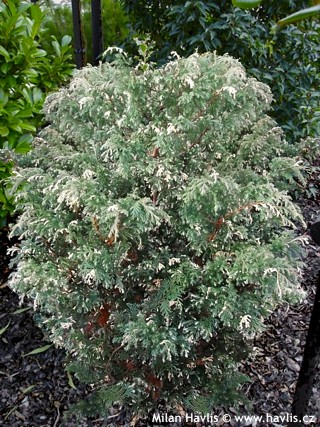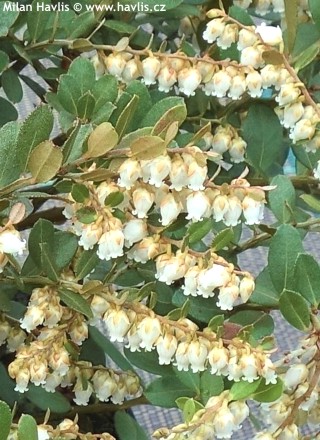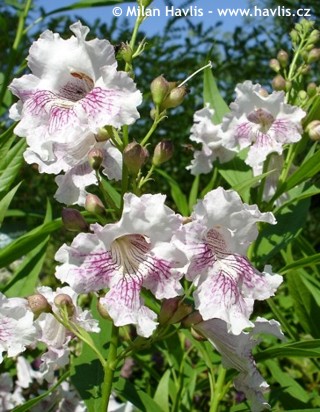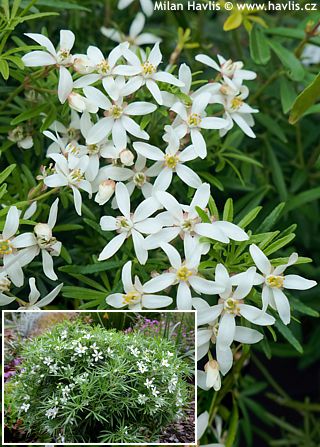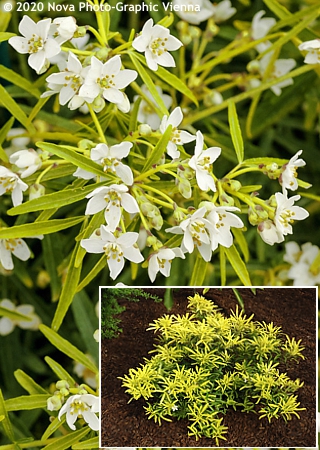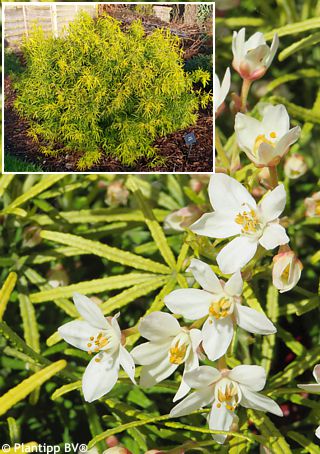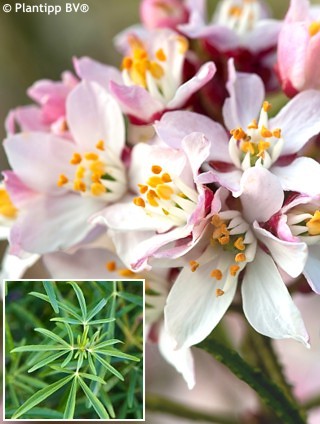CURRENTLY IN STOCK:
Although this incense cedar is one of the most sought after conifers of the south, it seems to perform much better in Czech climate thanks to cold and wet winters. It needs a lot of sun in summer though to keep its varigated leaves golden. Though, if the sun is not as hot as in the Mediterranean, fo ...

5 - 10m

full to partial sun

5 (down to -29°C)

for zone 5+6

for zone 7
Aphrodite is a beautiful, large-flowered sweetshrub hybrid between c.chinensis and c.occidentalis. The flowers are often compared to magnolias - both in shape and size. They are 7-9 cm across, rich crimson to burgundy red, and appear with the first hot days of May, and continue blooming until late J ...

V - VIII

3 - 4m

2 - 3m

full to partial sun

7 (down to -23°C)

for zone 5+6

for zone 7
This easy to grow shrub has many names and all of them say something about the beautiful perfume of the flowers: sweetshrub, strawberry shrub, or even pineapple shrub. They really smell like a few types of fruit: strawberry, apple, and even melon. Sweetshrub is native to much of the eastern USA and ...

V - VI

1,5 - 2,5m

1 - 1,5m

full sun

5 (down to -29°C)

for zone 5+6

for zone 7
Hartlage Wine is an interspecific hybrid sweetshrub bred by Richard Hartlage in 1991, a former student of NC State University, USA. He managed to cross calycanthus floridus and sinocalycanthus chinensis. The result is a very floriferous deciduous shrub with quite large 6.9-8.5 cm across flowers. The ...

VI - VIII

1,5 - 2,5m

1 - 1,5m

full to partial sun

5 (down to -29°C)

for zone 5+6

for zone 7
Arctic Dawn is an autumn flowering camellia bred by dr. Ackerman. It is a cross between a very hardy species camellia oleifera (cv. Lu Shan Snow) and camellia ‘November Pink’. It produces large, 10-12 cm across, semi-double to peony double, coral pink flowers with yellow stamens in the c ...

X - III

2 - 3m

1 - 1,5m

semi-shade to shade

6b (down to -21°C)

for zone 5+6

for zone 7
Ashton’s Pride is an autumn flowering camellia from the Ashton series bred by dr. Ackerman. It is a cross between a very hardy species camellia oleifera (cv. Plain Jane) and camellia sasanqua (cv. Santozaki). It produces medium large, 6-8 cm wide, soft pink, single flowers with yellow stamens ...

IX - XI

1,5 - 2,5m

1,5 - 2,5m

semi-shade to shade

6b (down to -21°C)

for zone 5+6

for zone 7
Black Lace is an older and proved variety of hardy camellia, in fact one of the best reds available. Its is a hybrid of c.reticulata and c.williamsii and has so far withstood -20°C. Its fully double, dahlia-like flowers are rich red, and bloom from early April for 6 to 8 weeks if the plant has enoug ...

IV - V

1,5 - 3m

1,5 - 2,5m

semi-shade to shade

7 (down to -23°C)

for zone 5+6

for zone 7
Ice Follies is a spring flowering hardy camellia from dr. Ackerman that first flowered in 1984 and was registered in 1992. It is a cross between c. x williamsii ‚November Pink‘ and c. oleifera. It produces large, 10-12 cm across, semi-double flowers. They are soft pink with a bit darker ...

IV - V

2 - 3m

1,3 - 1,5m

semi-shade to shade

7 (down to -23°C)

for zone 5+6

for zone 7
Pink Icicle is a showy, large-flowered hybrid camellia bred by dr. Ackermann from the United States National Arboretum. Its semi-double, soft pink flowers are 11 cm across, and open in April for 6-8 weeks. Leaves are evergreen, obovate, gently serrated at margins, deep green, and glossy. It grows fa ...

IV - V

1,8 - 2,5m

1,3 - 1,8m

semi-shade to shade

6b (down to -21°C)

for zone 5+6

for zone 7
Snow Flurry is an autumn flowering camellia bred by dr. Ackerman introduced in 1987 (Maryland, USA). It is a cross between a very hardy species camellia oleifera and camellia ‘Frost Princess’ which also has c. oleifera genes. It produces mid-sized, 6-8 cm wide, semi-double to fully doubl ...

X - XII

1,5 - 2m

1,5 - 2,5m

semi-shade to shade

7 (down to -23°C)

for zone 5+6

for zone 7
Spring Festival is one of the most valued hardy camellia hybrids (cuspidata hybrid) with double, pink flowers. They are not very large but appear in profusion from early April for 6 to 8 weeks if the plant has enough buds. These are formed from the previous year and need as long as half a year to ma ...

IV - V

1,5 - 3m

1 - 1,5m

semi-shade to shade

6b (down to -21°C)

for zone 5+6

for zone 7
Spring Frill is a spring flowering hardy camellia from dr. Ackerman that first flowered in 1985 and was registered in 1992. It is a cross between c. oleifera ‚Plain Jane‘ and c. vernalis ‚Egao‘. It produces large, 10-12 cm across, rose-like, double flowers with 34 frilled, ro ...

IV - V

2 - 3m

1,3 - 1,5m

semi-shade to shade

7 (down to -23°C)

for zone 5+6

for zone 7
Winter’s Sunset is an autumn flowering camellia from the Winter series bred by dr. Ackerman. It is one of the very rare varieties with variegated foliage. It produces small, bright pink, single, non-fragrant flowers with numerous yellow stamens in the centre from late October for 4-6 weeks.
L ...

X - XI

1,5 - 2,5m

1,5 - 2m

semi-shade to shade

6b (down to -21°C)

for zone 5+6

for zone 7
Showa-no-sakae is a winter camellia variety which is often classified as Camellia sasanqua. Its pretty flowers are small to mid-sized (6-8 cm), peony-like, semi-double to fully double, medium to deep pink. It begins to bloom according to the maturity of the buds and the weather conditions, usually f ...

I - XII

2 - 3m

1,5 - 2m

semi-shade to shade

6b (down to -21°C)

for zone 5+6

for zone 7
Adeyaka means Fascinating in Japanese, and the name was aptly chosen for this special Japanese camellia. It produces uniquely bell-shaped (but not nodding) flowers, 6-8 cm across when fully open, revealing multiple yellow stamens in the centre. The colour is rich velvet red, and flowers appear from ...

III - V

1,5 - 3m

1,5 - 2m

semi-shade to shade

7 (down to -23°C)

for zone 5+6

for zone 7
Alba Simplex is a spring flowering hardy camellia whose origin, despite the availability of multiple historical sources, is rather uncertain. One source claims that it comes from China but does not support it with any further details. Another source says it comes from Germany, registered in 1816, an ...

III - IV

2 - 3m

1,5 - 2m

semi-shade to shade

7 (down to -23°C)

for zone 5+6

for zone 7
Fire and Ice, or Fire’n’Ice is a rock’n’roll among hardy Japanese camellias, and possibly the largest flowering double, red, hardy camellia so far. Its flowers are 9-10 cm across, semi-double or fully double with shorter sepals, rich red with yellow stamens in the centre. Flo ...

III - IV

1,5 - 3m

1,5 - 2m

semi-shade to shade

7 (down to -23°C)

for zone 5+6

for zone 7
Kimberley is another old Japanese camellia variety from early 20th century, and awarded AGM by RHS in 1934. It produces beautiful, cup-shaped, rich scarlet red blossoms with a crown of yellow stamens. Flowering begins in April and continues for 6-8 weeks. Leaves are evergreen, narrowly obovate, gent ...

IV - V

2,5 - 3,5m

1,3 - 1,5m

semi-shade to shade

6b (down to -21°C)

for zone 5+6

for zone 7
Kingyo-tsubaki is another collectible gem among Japanese camellias. It was first described in Shirai-Bunko from 1789 and has so far received many names. Translation of its accepted Japanese name means goldfish camellia because its leaves are conspicuously divided at the apex into 3 tips, just like a ...

I - IV

1,5 - 2,5m

1,5 - 2,5m

semi-shade to shade

8 (down to -18°C)

for zone 5+6

for zone 7
Kuro Delight is a spring flowering hardy camellia from dr. Ackerman, perhaps the darkest red among the hardy varieties. It is a seedling of c. japonica ‚Kuro-tsubaki‘ x ‚Variety Z‘ that first flowered in 1987 and was registered in 1999. It makes medium-sized, 8-10 cm wide, se ...

IV - V

2 - 3m

1,3 - 1,5m

semi-shade to shade

7 (down to -23°C)

for zone 5+6

for zone 7
Sanpei-tsubaki is a gentle companion of commonly showcase Japanese camellias. It originated in Japanese prefecture Aichi in 1966 and was named after Mr. Sanpei Oguri, jr. (tsubaki means camellia). Its flowers are rather small but very handsome. They single, anemone-like, 6 or 7-petalled, rose pink w ...

I - IV

1 - 1,5m

1 - 2m

semi-shade to shade

8 (down to -18°C)

for zone 5+6

for zone 7
April Dawn is a chameleon hardy camellia producing variable flowers. They are large, 7-10 cm across, fully double, mostly white with rich pink stripes but a few turn solely dark pink with or without white stripes. They bloom from early April for 6 to 8 weeks while the shrub has enough buds. They are ...

IV - V

1,5 - 2,5m

1 - 1,5m

semi-shade to shade

7 (down to -23°C)

for zone 5+6

for zone 7
INDIAN SUMMER® is one of the latest varieties among trumpet creepers. It is a successful cross between c.tagliabuana and c.radicans that originated in the Netherlands and was patented in the USA under the name Kudian.
It blooms abundantly from early July until the first frosts if the plant ha ...

VII - IX

1 - 1,5m

1 - 1,5m

full sun

5 (down to -29°C)

for zone 5+6

for zone 7
Monumentalis is a unique version of hornbeam with strictly conical shape and very slow growth rate. Leaves are bright green and cover the whole of the plant. Even after they fall the tree remains very attractive with its regularly growing branches making a bonsai appearance. No pruning or trimming r ...

1 - 3m

1 - 1,5m

full to partial sun

4 (down to -34°C)

for zone 5+6

for zone 7
HINT OF GOLD bluebeard is a showstopper due to its vibrant golden chartreuse leaves. They are larger than on most other bluebeards – up to 5.5 cm long and 3 cm wide, deciduous, and bear interesting fragrance when crushed. They cover the plant completely and make it an attractive item long befo ...

VIII - X

0,6 - 1m

0,6 - 1m

full sun

5b (down to -27°C)

for zone 5+6

for zone 7
STEPHI is a unique bluebeard variety with flowers that are not blue. They are pale pink to almost white on a clear sunny day. All other features are identical to most other caryopteris varieties. It is a deciduous shrub with fragrant leaves that are medium green, narrowly lanceolate, shallowly notch ...

VIII - X

0,5 - 0,7m

0,6 - 1m

full sun

5b (down to -27°C)

for zone 5+6

for zone 7
Gloire de Versaille is a French hybrid of California lilac, a cross between c. americanus, a Missouri native of excellent hardiness, and very tender Mexican species c. caeruleus with sky blue flowers. The result is a hardy, deciduous shrubs with a profusion of small panicles composed of powder blue ...

VII - IX

1 - 1,5m

1 - 1,5m

full sun

5b (down to -27°C)

for zone 5+6

for zone 7
Marie Simon is another French hybrid ceanothus, a cross from 1830 between c. x delilianus with blue flowers and c. ovatus with beige flowers. The result is a deciduous shrub with a profusion of soft pink flowers composed in small, fluffy panicles. They come out from late July and rebloom continuousl ...

VII - IX

1 - 1,5m

1 - 1,5m

full sun

7 (down to -23°C)

for zone 5+6

for zone 7
Compacta is an Italian dwarf variety of Atlas cedar. This evergreen conifer has short, sharp, mid green needles. It grows slowly, forming a rounded shrub. To maintain a perfect shape it may be pruned beginning of spring.
It is suitable for large rockeries, in full sun. It is widely soil adaptable i ...

0,5 - 1,8m

0,5 - 1,8m

full sun

6b (down to -21°C)

for zone 5+6

for zone 7
If you like cedars or perhaps if you are a collector or just an enthusiast don’t miss this one. It is a beautiful example of a form that is rarely seen in private gardens or arboretums.
Fastigiata is an attractive form of Atlas cedar with strictly narrow, columnar habit. Its evergreen, short ...

4 - 8m

1 - 2m

full sun

7 (down to -23°C)

for zone 5+6

for zone 7
Deodar – Himalayan cedar is the most graceful of all cedars. It has strictly pyramidal habit when young, spreading branching and weeping ends. Aurea is an extremely attractive variety with golden-yellow to yellow-green needles. They are evergreen, borne in whorls of 20-30. Female cones appear ...

3 - 5m

2 - 4m

full sun

5b (down to -27°C)

for zone 5+6

for zone 7
Himalayan cedar is the most graceful of all cedars. Bushes Electra is a slower growing variety bred by Richard Bush in Canby, USA, at the turn of the century. It bears showy, 2-3 cm long, needles of silvery blue colour on insolated parts of the plant, and blue-green color inside the bush. The side b ...

4 - 7m

2 - 3m

full sun

5b (down to -27°C)

for zone 5+6

for zone 7
Golden Horizon is an interesting variety of Himalayan cedar with weeping branches. The needles are evergreen, yellow-green when young and in summer, turning blue-green as they mature and in the shade. The shape of the shrub is irregular, making horizontal branches with weeping ends.
It grows slowl ...

1 - 1,5m

1 - 3m

full sun

6b (down to -21°C)

for zone 5+6

for zone 7
Pendula Himalayan cedar is one of the most peculiar yet highly desired varieties among cedars. Each piece is unique and often quite bizarre, making it a striking specimen in any garden. And if you're an enthusiastic "pruner," you'll definitely have fun here! It is an evergreen conifer with 3–4 ...

2 - 3m

2 - 3m

full to partial sun

5b (down to -27°C)

for zone 5+6

for zone 7
Buttonbush is a very interesting shrub, popular with collectors. Its main feature are flowers that are perfect spheres with tiny, pure white, tubular flowers. They are followed by small, green fruit. It flowers on current year’s wood. They have a nice scent and attract butterflies.
Deciduous ...

VIII - IX

0,5 - 1,8m

0,5 - 1,8m

full sun

5 (down to -29°C)

for zone 5+6

for zone 7
Katsura tree is native to China and Japan, and thanks to its versatility it has found many fans among both professionals and general gardening public. It is a deciduous shrub or very rarely a tree (uneasy to train it into a tree with one central leader). Rotfuchs means Red fox and it is a special va ...

3 - 6m

1 - 2m

full sun

4 (down to -34°C)

for zone 5+6

for zone 7
RISING SUN™ is an American variety of Eastern redbud found by Ray and Cindy Jackson for their Jackson Nursery in Belvidere, Tennessee, as a chance seedling. It boasts large, 10-14 cm long and wide, broadly heart-shaped leaves which emerge bright golden or orange while older leaves are bright y ...

IV - V

2 - 4m

2 - 4m

full to partial sun

5 (down to -29°C)

for zone 5+6

for zone 7
Avondale is a Chinese redbud that comes from New Zealand and is said to be the most profusely flowering redbud ever. From the first hot days of spring small, deep pink, pea-like flowers appear on bare wood, opening from buds that overwintered from the previous season. Flowering lasts for as long as ...

IV - V

1,5 - 3m

1,5 - 2,5m

full sun

7 (down to -23°C)

for zone 5+6

for zone 7
Sweet pepper bush or summersweet is a deciduous shrub from the east coast of USA, occurring in moist locations to wetlands, and on stream banks. It is a trouble-free plant which is becoming popular again in our country thanks to its strongly scented flowers and fresh green foliage.
Summersweet is a ...

VII - VIII

1 - 2m

1 - 1,5m

full to partial sun

4 (down to -34°C)

for zone 5+6

for zone 7
Hummingbird is a cute name for a cute and truly dwarf sweet pepper bush variety. From late July it produces a profusion of rather short, spike-like, erect racemes composed of creamy white, sweetly scented flowers. They last for 2-3 weeks but a well-established shrub may produce 2 or 3 flushes of flo ...

VIII - IX

0,5 - 1,2m

0,5 - 1,3m

full to partial sun

4 (down to -34°C)

for zone 5+6

for zone 7
Ruby Spice has flowers of has the deepest shade of pink so far selected. Flowers are bell-shaped, light pink, opening from rose buds, formed in upright racemes in July and August. They have a lovely, sweet fragrance, hence its name. Flower buds are deep pink.
Oval leaves are deciduous, mid-green, ...

VII - VIII

1 - 2m

1 - 2m

semi-shade / partial sun

4 (down to -34°C)

for zone 5+6

for zone 7
This giant dogwood has another name which, in my opinion, characterizes the plant much better = wedding cake tree. Looking at the habit of the more commonly grown cultivar Variegata one knows exactly what it means. This beauty can easily become a show-stopping specimen in a garden of literally any s ...

IV - V

3 - 5m

2 - 3m

full sun

5 (down to -29°C)

for zone 5+6

for zone 7
Cherokee Daybreak® has 4 large, creamy white bracts around a tiny flower head. Leaves are mid green with yellowish-white varigation that turns pink towards the end of summer. Autumn leaves show multiple of colours with prevailing purple shades.
This shrub does not like stress of any kind. Find ...

IV - V

2 - 4m

full to partial sun

5 (down to -29°C)

for zone 5+6

for zone 7
Benifuji is a Japanese dogwood variety which in this case originated in Japan, near Mount Fuji. It was found among selected seedlings in Shinkyo Gotenba-shi nursery already in 1970, still, its patent was released only in 1994 (PP8,676).
Benifuji (or Beni Fuji) is a Japanese dogwood with the deepest ...

V - VI

2,5 - 3,5m

1,5 - 2,5m

full sun

5 (down to -29°C)

for zone 5+6

for zone 7
Big Apple is a Japanese dogwood variety from the USA where it was discovered and selected by Polly Hill in the 1960s. The seeds were obtained from M.M. Brubaker of Pennsylvania and as the plants grew she noticed one that was different from the species. She named it Big Apple and while most contempor ...

VI - VII

3 - 5m

2 - 3m

full sun

5 (down to -29°C)

for zone 5+6

for zone 7
“Satomi” is the most sought after variety among the Japanese ones. Its flowers are of light to deep pink colour that is unevenly spread throughout the flowers. Technically, they are not flowers but 4 flower bracts composed around small flower heads. They are up to 10 cm wide and conspicu ...

VI - VI

1,5 - 3m

full sun

5 (down to -29°C)

for zone 5+6

for zone 7
This Japanese dogwood has both large leaves and flowers. It flowers in June when the shrub is fully in leaf. The flowers are 6-8 cm wide, creamy white flower composed around small flower heads. They are followed by edible, bright pink fruit that looks like litchi. Pointed leaves are deciduous, ovate ...

V - VI

2 - 3m

2 - 3m

full to partial sun

5 (down to -29°C)

for zone 5+6

for zone 7
China Girl is a freely flowering Japanese dogwood with numerous creamy white flowers in June when the shrub is fully in leaf. Technically, they are not flowers but 4 flower bracts composed around small flower heads. They are followed by edible, bright pink fruit that looks like litchi.
Pointed lea ...

VI - VI

2 - 3m

2 - 4m

full sun

5 (down to -29°C)

for zone 5+6

for zone 7
Bloodtwig dogwood is a low-maintenance shrub that is popular especially in parks and gardens with reduced time for regular care.
Its main attraction are beautifully coloured leafless branches in winter. This variety shows glowing orange at the base to vivid red and purple towards the top of new, se ...

V - V

1 - 1,5m

1 - 1,3m

full sun to shade

4 (down to -34°C)

for zone 5+6

for zone 7
European hazelnut is a well-known shrub of European woodlands which is popular mainly for its fruit - nuts. It is a suckering, thicket-forming shrub with numerous upright stems. As it is a dense and large shrub it is commonly used as a screening plant. It will also make a wild hedge which should be ...

II - III

2 - 4m

2 - 4m

full to partial sun

4 (down to -34°C)

for zone 5+6

for zone 7
Hazel is a well-known shrub of European woodlands which is popular mainly for its nuts.
It is a suckering, thicket-forming shrub with numerous upright stems. As it is a dense and large shrub it is used as a screening plant. It will also make a wild hedge which should be controlled if required compa ...

II - III

2 - 4m

full to partial sun

4 (down to -34°C)

for zone 5+6

for zone 7
Contorta is a contorted version of our European hazelnut. It was found as a spontaneous mutation of a branch in a hedge in Tortworth, England, in the middle of 1800’s by a Victorian gardener Canon Henry Nicholson Ellacombe. Enthusiastically and willingly he cut off a twig brought it to his fri ...

II - III

2 - 3m

2 - 3m

full to partial sun

4 (down to -34°C)

for zone 5+6

for zone 7
Filbert is a hazelnut species from S.E. Europe and S.W. Asia and exhibits a vigorously growing many-stemmed shrub with deciduous leaves. Purpurea is an old variety with deep maroon to near black leaves. They are 5-12 cm long, 4-10 cm wide, and during summer the colour of maturing leaves changes to d ...

II - III

3 - 6m

3 - 6m

full sun

4 (down to -34°C)

for zone 5+6

for zone 7
DUSKY MAIDEN is a new smoke bush introduction from England by Peter Moore. It was invented in 1998 as an interspecific cross between Cotinus szechuanensis (male parent) and Cotinus coggygria ‘Velvet Cloak’ (female parent). After almost a decade of testing it was applied for a patent that ...

VI - VII

1,5 - 2,5m

1,5 - 2,5m

full sun

7 (down to -23°C)

for zone 5+6

for zone 7
Smoke tree might have a slight problem these days when smoking outside becomes prohibited ... just joking, the alleged smoke is what flowering of this shrub looks like. It blooms from
June to July and from a distance the clusters do look like purple smoke. The leaves of Royal Purple are deep burgund ...

VI - VII

2 - 5m

full to partial sun

5 (down to -29°C)

for zone 5+6

for zone 7
GOLDEN SPIRIT® is a new variety of smoke tree from Boskoop, Netherlands, patented in 2000 by Sanders-van Harn a Adriana Christina Bastiona under the name „Ancot“.
It is unique for its bright lime-yellow foliage on relatively long stalks compared to the leaf size. Leaves are oval t ...

VI - VII

2 - 3m

2 - 3m

full to partial sun

5 (down to -29°C)

for zone 5+6

for zone 7
Lilla® smoke tree is a novelty that was first introduced at the Plantarium exhibition in Holland in 2011 where it received bronze medal. It is a dwarf version of Royal Purple variety with slower and more compact growth. It has deciduous, deep wine red, rounded leaves that turn scarlet red, oran ...

VI - VII

1 - 1,3m

1 - 1,3m

full sun

4 (down to -34°C)

for zone 5+6

for zone 7
Splendens hawthorn is undoubtedly one of the most beautiful trees of northern hemisphere not only among hawthorns. It is valued for its lush, glossy foliage and a profusion of red berries. Leaves are deciduous, broadly elliptic, serrated at margins, dark green in spring and summer, and take on vibra ...

V - VI

4 - 7m

3 - 4m

full to partial sun

4 (down to -34°C)

for zone 5+6

for zone 7
One of the most beautiful conifers of our climate is Japanese cedar. There are many species and varieties. Globosa Nana was first discovered in 1923 in Japan, where it is called Mitama-sugi.
It is a dense, compact conifer with rounded branches. The needles are curved, inward-pointing, bright green ...

1 - 1,8m

1 - 1,3m

full to partial sun

7 (down to -23°C)

for zone 5+6

for zone 7
Little Diamond is another dwarf variety of Japanese cedar. It was found in the Netherlands in 1990. It is very similar to Little Champion or Globosa Nana but grows yet a little smaller.
Little Diamond is a dense, compact conifer with rounded branches that look like woven rope. The needles are curv ...

0,5 - 0,8m

0,5 - 1m

full to partial sun

5 (down to -29°C)

for zone 5+6

for zone 7
Little Champion is a witche’s broom of another Japanese cedar variety called Gracilis, found in Europe. It is very similar to Globosa Nana variety but has slightly different foliage and shape and grows smaller.
Little Champion is a dense, compact conifer with rounded branches that look like w ...

0,5 - 1m

0,5 - 1,3m

full to partial sun

5b (down to -27°C)

for zone 5+6

for zone 7
Vilmoriniana is a dwarf variety of Japanese cedar imported from Japan and introduced around 1890 by French botanist and horticulturist Auguste Louis Maurice Lévêque de Vilmorin (1849-1918). At least 20 different plant species or cultivars proudly bear his name. This cryptomeria is a low and den ...

0,5 - 1,2m

0,8 - 1,5m

full to partial sun

5b (down to -27°C)

for zone 5+6

for zone 7
Sekkan is a gorgeous evergreen conifer not only for Japanese gardens. It forms a fat, cone-shaped shrub or small tree with bright, sulphur-yellow or creamy-yellow new growths. They remain yellow throughout the year until next spring when they turn deep green and are replaced by new foliage that is a ...

3 - 8m

2 - 3m

full to partial sun

5b (down to -27°C)

for zone 5+6

for zone 7
Gold Rider is still quite new in the Leyland cypress family. It produces flattened sprays of bright yellow-green, scale-like leaves. The branches are not pendent, not erect. Something in between and that makes it stand apart from chamaecyparis. The big advantage of Leyland cypress is the fact that i ...

2 - 10m

2 - 4m

full to partial sun

5b (down to -27°C)

for zone 5+6

for zone 7
...

2 - 10m

2 - 3m

full sun

5b (down to -27°C)

for zone 5+6

for zone 7
Smooth cypress is an extraordinary conifer whose steel-blue needles will leave no doubt that this one is really something.
The species of this cypress comes from SW of the USA, while Fastigiata variety was selected in Italy. It has distinctly silvery-blue to glaucous colour of thread-like needles a ...

5 - 11m

1 - 3m

full sun

7 (down to -23°C)

for zone 5+6

for zone 7
Smooth cypress comes from SW of the USA and is probably the only true cypress that can stand winters down to zone 6. Fastigiata varieties are of columnar habit and are a sought after plant for both exotic types of gardens as well as typical Central-European landscapes where it will create a perfect ...

5 - 9m

1 - 3m

full sun

6b (down to -21°C)

for zone 5+6

for zone 7
Garda is a selected form of Tuscan cypress found in the Italian Lake Garda region. It naturally forms slender, evergreen columns, whose dense branches are covered with dark green, scale-like needles that do not lose their colour even in winter. The branches are shorter, firmly attached to the trunk, ...

6 - 12m

1 - 2m

full sun

8 (down to -18°C)

for zone 5+6

for zone 7
Lena is a very attractive variety of broom that bears small, pea-like flowers that are soft red outside and vivid golden-yellow inside. This combination looks striking and at the same time pleasant thanks to warm colour tones. Blooming time is early May to early June. Leaves are small, deciduous, mi ...

V - V

0,5 - 1,5m

0,5 - 1,5m

full sun

5b (down to -27°C)

for zone 5+6

for zone 7
Pink Storm is a pink flowering variety of Chinese flowering quince from the DOUBLE TAKE™ series. From early spring it makes large, 4-6 cm across, semi-double, crepe-myrtle-like, pink flowers with partially frilled margins. They commonly open in the first decade of April, however, if the winte ...

IV - V

1,5 - 2m

1,5 - 2m

full to partial sun

5 (down to -29°C)

for zone 5+6

for zone 7
Scarlet Storm is a unique variety of Chinese flowering quince from the DOUBLE TAKE™ series. From early spring it makes large, 5-6 cm across, semi-double, camellia-like flowers of rich red color, decorated with yellow stamens in the centre. They commonly open in the first decade of April, howe ...

IV - V

1,5 - 2m

1,5 - 2m

full to partial sun

5 (down to -29°C)

for zone 5+6

for zone 7
Pink Lady is a hybrid variety of Japanese quince, a cross between ch.japonica and ch.speciosa with large, pink flowers which usually open from mid April. However, if the winter is warm you can see numerous buds opening already in March. The shrub flowers for 4-6 weeks, well into early May when leave ...

IV - V

1 - 1,5m

1 - 1,5m

full to partial sun

5 (down to -29°C)

for zone 5+6

for zone 7
Drooping Solo is a Lawson cypress variety discovered by a Dutch conifer lover and horticulturist Wiel Linssen from Baexem. It was a seedling mutation of Imbricata Pendula, a similar variety of much taller but narrower habit. Drooping Solo forms dense shrubs of a broadly pyramidal shape with drooping ...

2 - 3m

1,5 - 2m

full to partial sun

5 (down to -29°C)

for zone 5+6

for zone 7
Cypress trees trees and shrubs are very popular for their variable shapes, leaf types and colours. Ivonne variety (or sometimes spelled Yvonne) has almost flat, soft needles of bright greeny-yellow colour from spring to summer, changing to golden-yellow in winter. It grows medium fast into a columna ...

3 - 6m

full to partial sun

5 (down to -29°C)

for zone 5+6

for zone 7
Cypress trees and shrubs are very popular for their variable shapes, leaf types and colours. Stardust is a variety with almost flat needles of pale green colour near the main stem, grading to greenish-yellow towards the bright golden-yellow ends of the branches which tend to droop slightly as they g ...

3 - 6m

1 - 2m

full to partial sun

5 (down to -29°C)

for zone 5+6

for zone 7
Cypress trees and shrubs are very popular for their variable shapes, leaf types and colours. Variety Columnaris has blue needles and compact shape. It does not grow wider than 1m which makes it ideal for hedges that are only trimmed at the top. Mature plants can reach 6-8m in many decades, they are ...

3 - 6m

1 - 1m

full to partial sun

5 (down to -29°C)

for zone 5+6

for zone 7
The Hinoki cypress is both a must-see and a must-have thereafter. Its dark green foliage is tightly congested, forming a tiny mound. It forms twisting fan-shaped branchlets in dense tiered layers.
Want to ask how fast it grows? Well it takes the same time as your partner does getting prepared for ...

1 - 1,5m

1 - 1,5m

full to partial sun

5 (down to -29°C)

for zone 5+6

for zone 7
Burgundy is a beautiful variety of desert willow of untraceable origin, possibly a selection of Rio Salado with slightly paler flowers. Burgundy desert willow makes deep maroon, velvety flowers with white and yellow stripes in the throat. They are slightly fragrant and formed in narrow, terminal, up ...

VI - IX

2 - 5m

2 - 4m

full sun

7 (down to -23°C)

for zone 5+6

for zone 7
Fringe tree is a very rare and beautiful small shrub or small tree. In early summer it has profusion of upto 20 cm long pendent panicles of fragrant, shiny snow-white, narrow flowers. Female plants produce bluish black berries, however, usually only male plants are sold in nurseries.
Mid to deep g ...

V - VI

1,5 - 3m

1,5 - 3m

full sun

4 (down to -34°C)

for zone 5+6

for zone 7
Pink Dawn is a name that fits this beauty perfectly. The orchid-like flowers are soft pink as a new dawn promising a lovely day. They have yellow throats with purple-pink veins and frilled margins. They are lightly scented with a sweet perfume that attracts butterflies. They keep coming out for as l ...

VI - IX

3 - 5m

2 - 4m

full sun

5b (down to -27°C)

for zone 5+6

for zone 7
The orchid-like flowers are pale to bright pink with a yellow throat and frilled margins. Flowers have a lovely, sweet scent. Summer Bells® is a chitalpa variety repeating flowering. It starts in early summer and last for 2-3 weeks, and then again in second half of August for further 2 weeks. U ...

VI - VIII

3 - 5m

2 - 4m

full sun

5b (down to -27°C)

for zone 5+6

for zone 7
This variety called Aztec Pearl was bred by Peter Moore and introduced in 1989, when Hiller Nurseries celebrated their 125th anniversary. Its name perfectly describes this evergreen plant from the moment it begins to show flower buds. They are pearl-shaped, very light pink, and open into simple, sta ...

V - VI

1 - 2m

1 - 2m

full to partial sun

7 (down to -23°C)

for zone 5+6

for zone 7
Possibly every plant is capable of creating its gold-leaved mutation. No wonder Peter Moore helped choisya with this process when crossing choisya ternata Sundance with choisya arizonica pollen. It was named GOLDFINGERS and was registered in 1998 i.e. 14 years before Hillier Nurseries introduced the ...

V

1 - 1,3m

1 - 1,5m

full sun

7 (down to -23°C)

for zone 5+6

for zone 7
GREENFINGERS® is a large-leaved Mexican orange variety from 2019, developed by Peter Catt from Liss Forst Nursery in Liss, Hamshire, England. It bears evergreen, softly leathery, glossy, palmate leaves divided into 7 leaflets, which have a distinct, spicy aroma when crushed, but do not use them ...

V

1 - 2m

1 - 2m

full sun

7 (down to -23°C)

for zone 5+6

for zone 7
WHITE DAZZLER is a follow-up choísie to Aztec Pearl from Peter Moore, introduced in 1991. It produces masses of simple, star-shaped, pure white, and very fragrant flowers with yellow stamens in May and June. Their perfume is very similar to orange flowers hence its name Mexican orange or Mexican bl ...

V - VI

1 - 2m

1 - 1,5m

full sun

7 (down to -23°C)

for zone 5+6

for zone 7













